Plant Profiles dive deep on one plant variety each month. They are meant to provide you with enough information to make good growing decisions. A desire to grow gorgeous flowers is one thing. However, discerning if a particular plant is right for you and your climate is a whole other ballgame.
My intention here is to give you as much practical information to make these decisions. However, I’m going one step further and taking you completely behind the scenes to share exactly what has worked for us as well. For this reason, Plant Profiles are broken up into what I’m calling the “Nuts and Bolts (N&B)” and “Behind the Scenes (BTS).”
If you haven’t already, please be sure to read the FFY Introduction to learn more about how Plant Profiles are organized.
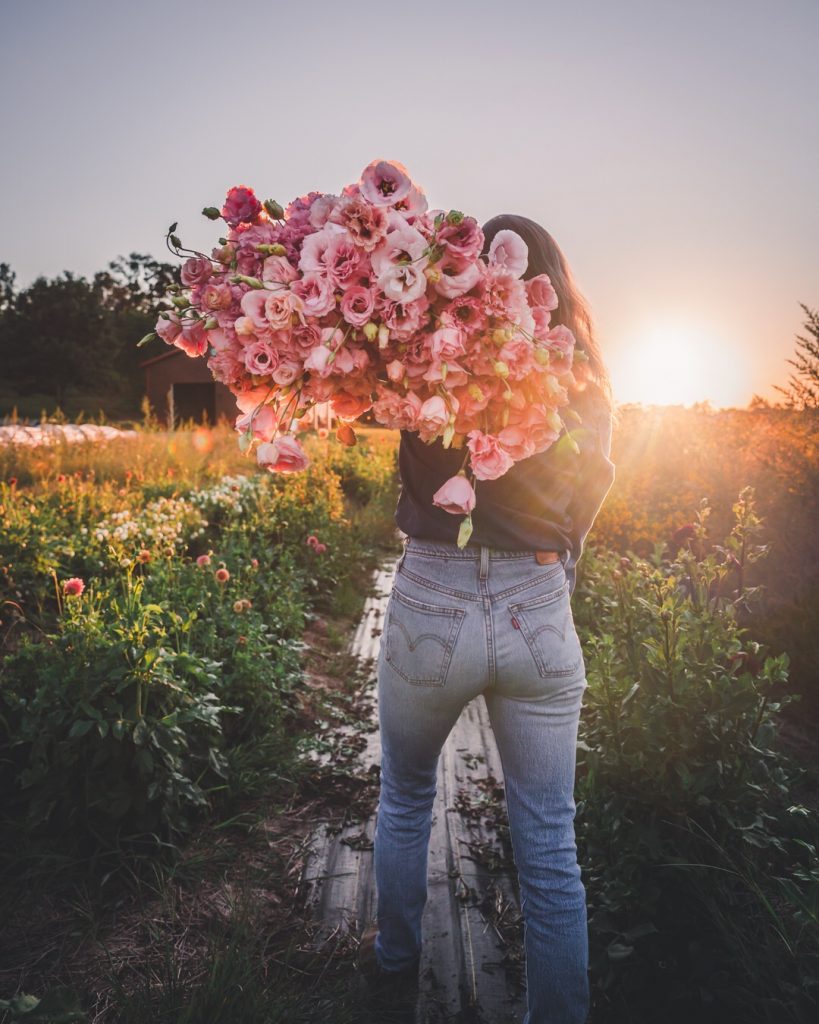
Primary Sources
The primary sources for the N&B portion come from:
- Postharvest Handling of Cut Flowers and Greens: A Practical Guide for Commercial Growers, Wholesalers & Retailers (Dole, Stamps, Carlson, et al).
- Specialty Cut Flowers, 2nd Edition, Revised & Enlarged (SCF): Industry standard for both new and experienced growers on the production of annuals, perennials, bulbs, and woody plants for fresh and dried cut flowers (Allan M. Amritage and Judy M. Laushman)
- Johnny’s Selected Seeds (Johnny’s): Johnny’s has been in the business for 50 years, with a research farm dedicated to finding the best seeds and tools for farmers and gardeners
- Utah State University (USU) trials from 2018–2022
- Farmer Bailey’s website: Bailey Hale is a past Regional Director of the ASCFG, seed-crop producer, plug broker, and a leading farmer-florist expert)
- Jennie Love’s website: Jennie Love is a past President of the ASCFG and a leading farmer-florist expert)
- Lisa Mason Ziegler’s Field & Flower Podcast with David Dowling, Episode 99: Lisa Mason Ziegler is a past Regional Director of the ASCFG, leading farmer-florist expert, author, podcast host, with a vast library of online workshops, while David Dowling is a past Director and President of the ASCFG, with over twenty years flower farming, eventually working for Ednie/Gloeckner
Zone Considerations:
- Bailey Hale and Thomas McCurdy’s previous farm, Ardelia Farms, is located in Zone 4a Vermont
- Lisa Mason Ziegler’s farm, The Gardener’s Workshop, is located in Zone 7a/8b Virginia
- Jennie Love’s farm, Love n Fresh Flowers, is located in Zone 6B/7 Philadelphia
- Johnny’s Selected Seeds research farm is located in Zone 5a Maine
- USU Trials were conducted at Greenville Farms, Zone 5 Utah and USU Botanical Center, Zone 6 Utah
- My farm, Petal Back Farm, is located in Zone 4b Wisconsin
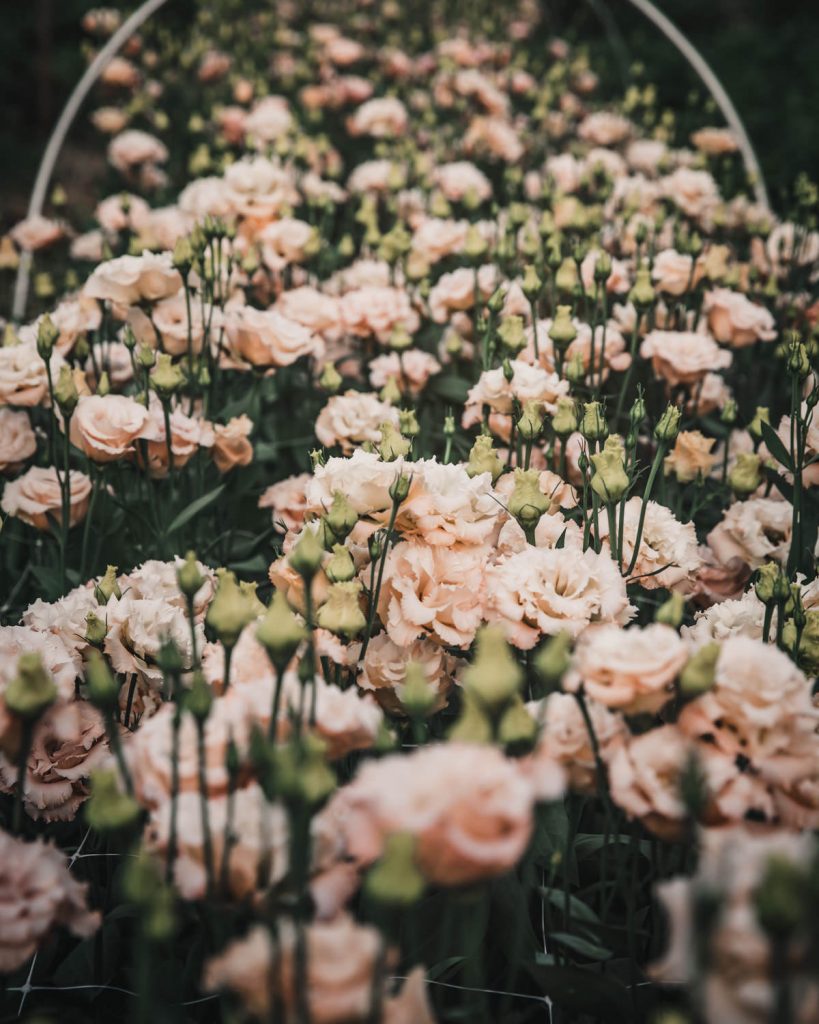
General Information: N&B
Latin Name Name: Eustoma grandiflorum
Common Name: Lisianthus, prairie gentian, Texas bluebell, showy prairie gentian
Origin: North America
Days to Maturity: 140–150 Days
Life Cycle: Annual
Spacing: 4–8″
Height: 24–36″
Lisianthus are a great cut flower showing no signs of losing popularity. They’re a native North American species that continues to be bred by American, Dutch, Japanese, and Israeli breeders. Lisianthus are biennials or short-lived perennials in their native habitat, but are generally treated as annuals in cut flower production (though they can be overwintered in warmer climates) (SCF). They naturally occur in dry sandy locations, but also along stream beds (FB).
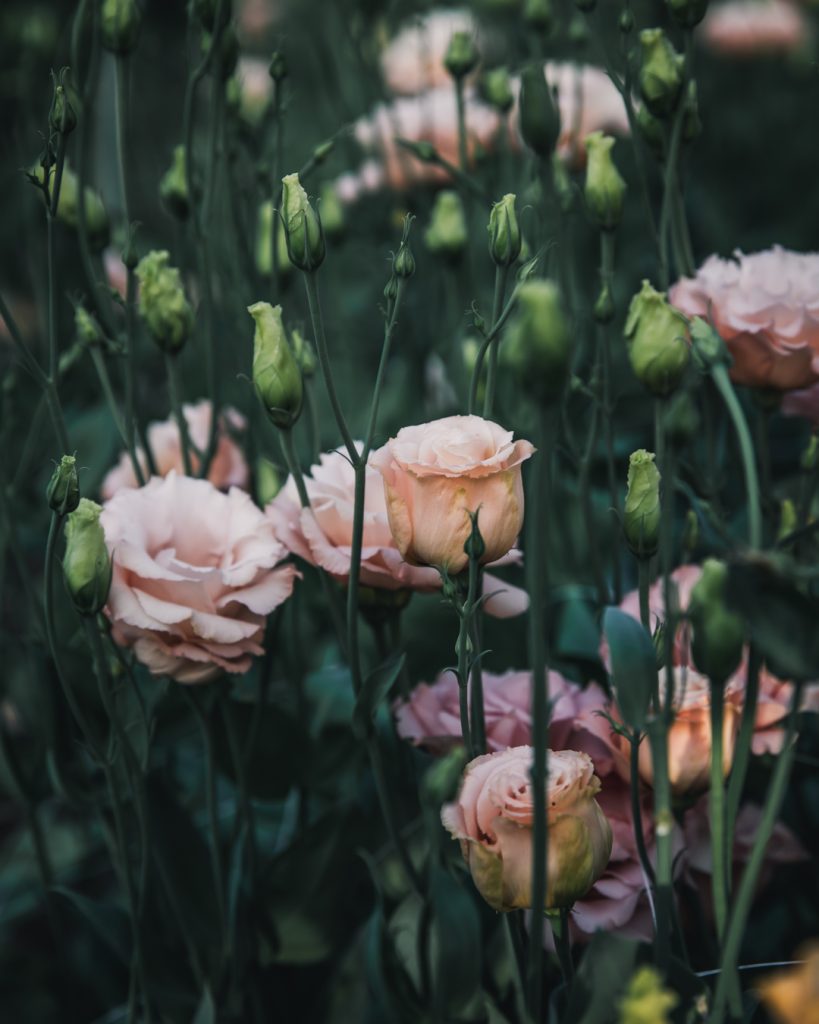
General Information: BTS
Lisianthus is a fabulous cut flower and one of our most-profitable crops. What I love most about lisianthus as a cut flower:
- Superb vase life (14 days), which is a customer favorite
- Once established, they are tough plants (they can handle the cold, and once more mature, they can also handle the heat and dry conditions)
- Hard to damage: Lisianthus flowers are tough!
- Design work without water, making them perfect for boutonnières, corsages, wedding bouquets, and installments
- One of the first flowers I can harvest for the week (due to vase life) and store until that week’s flowers are needed (whereas something like a dahlia I harvest right before designing/bouquet making)
- Premium-price flower
- Can be sold by the bunch
- Highly sought after flower by florists
- Native North American species, making it widely adaptable
- Multiple blooms on one stem
- Easy to harvest
- Longer harvest window
- Removing first bud improves flowering and can be used for small arrangements or design work
- As long as they are given proper conditions, great stem length
- They are STUNNING and come in a wide array of colors and forms
But every rose has its thorn, right? Potential shortcomings:
- Extremely slow to grow
- Considered challenging to start from seed
- Cannot handle heat when young
- No scent
Once we’re interested in a particular plant, it’s important to understand its native habitat when considering if we can or should grow it on our farm. The good news about lisianthus is that due to its broad geographical range, it’s widely adaptable to different conditions and temperatures. I’ve found that the most important factors when growing lisianthus are that it gets a cool start, plenty of water when first transplanted, and good drainage. We have very-cold springs that quickly transition to hot, humid summers. In my experience, baby lisianthus are tough as nails in chilly spring and handle the heat of summer when other plants start petering out. In 2020, when we had record days in the 90s, our dahlias struggled, but the lisianthus kept cranking without hesitation.
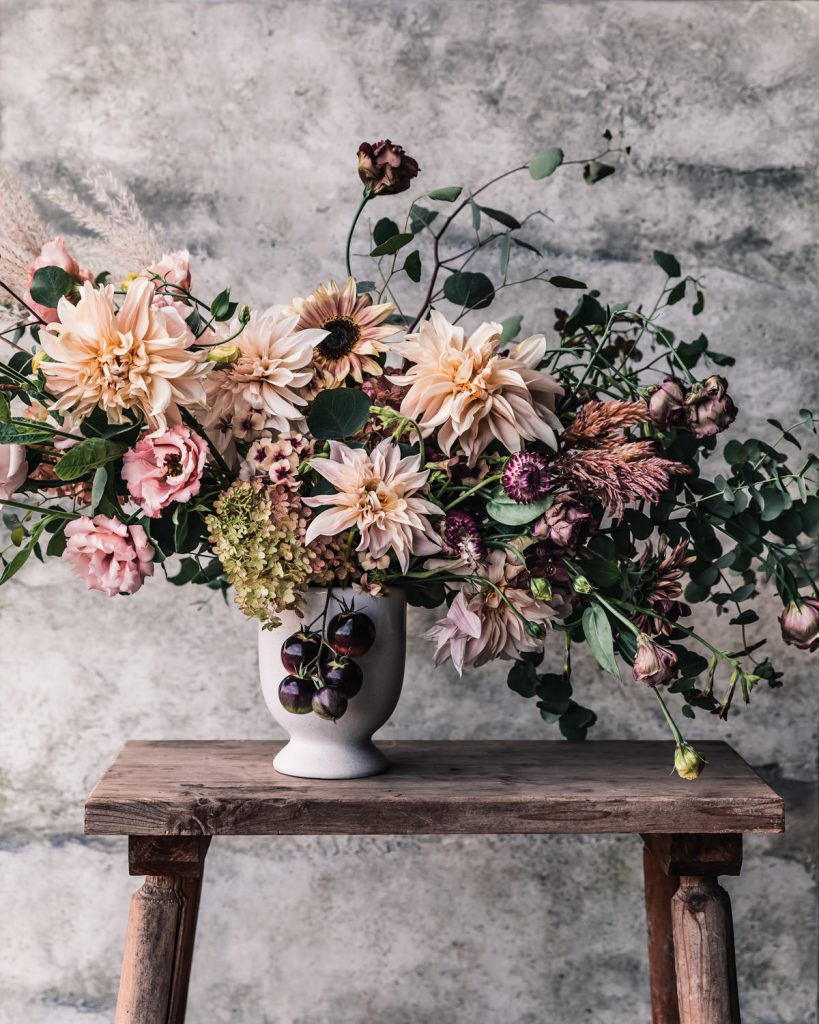
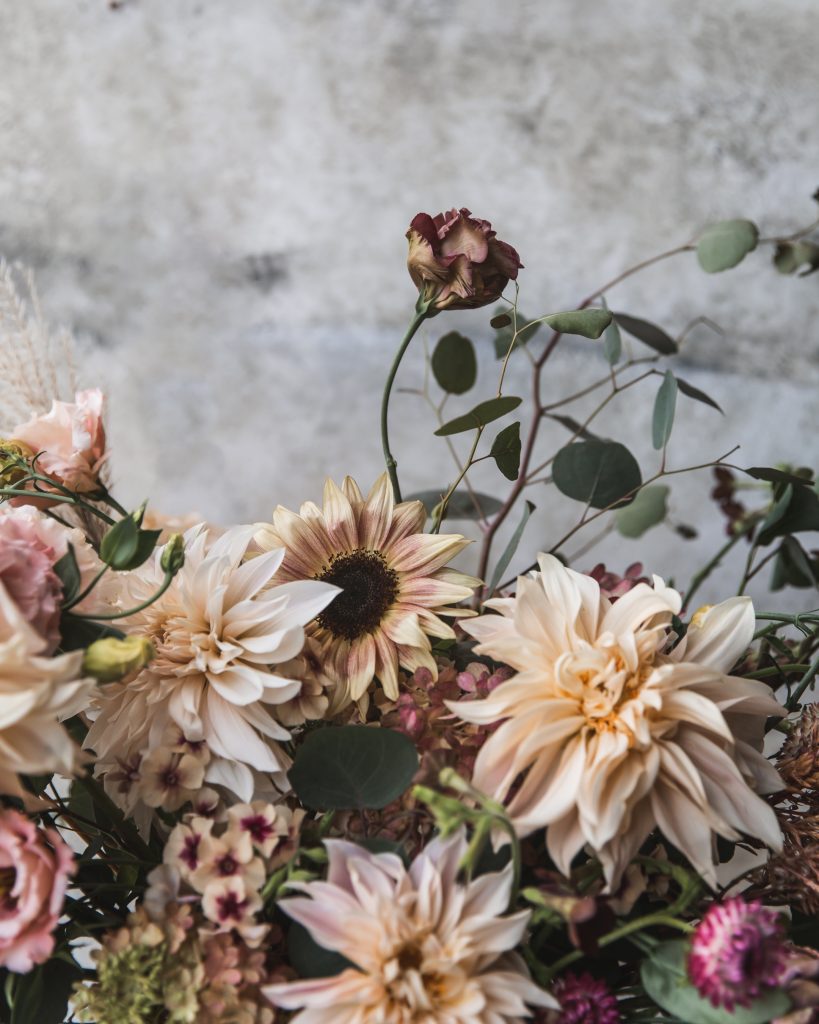
Propagation: N&B
Seed
Light is needed for germination, but a fine layer of vermiculite covering the seed will help control algae growth. Keep the soil evenly moist, but not saturated and maintain 70-75°F (21-24°C) soil temperature. Provide good air circulation until emergence. Reduce moisture levels once emergence has occurred and allow to dry out slightly between waterings to prevent algae growth. After emergence, Johnny’s recommends maintaining temperatures of 60-70°F (16-21°C), while SCF recommends 45–65F (7-18C). Avoid stressing the plants with high temperatures over 85°C (29°C) and overwatering during this stage to prevent rosetting (Johnny’s) and stunted stem elongation (SCF).
Cuttings
Not recommended as they are usually shorter, weaker, and have fewer flowers (SCF).
Plugs
Mature plugs for purchase are very common among growers. According to Lisa Mason Ziegler, “Growing plugs is not a cop out, it’s what professionals do” and that “they are more economical in the long run.” David Dowling also makes an excellent point that aside from the high quality, plugs are going to be uniform and consistent, ensuring a better harvest.
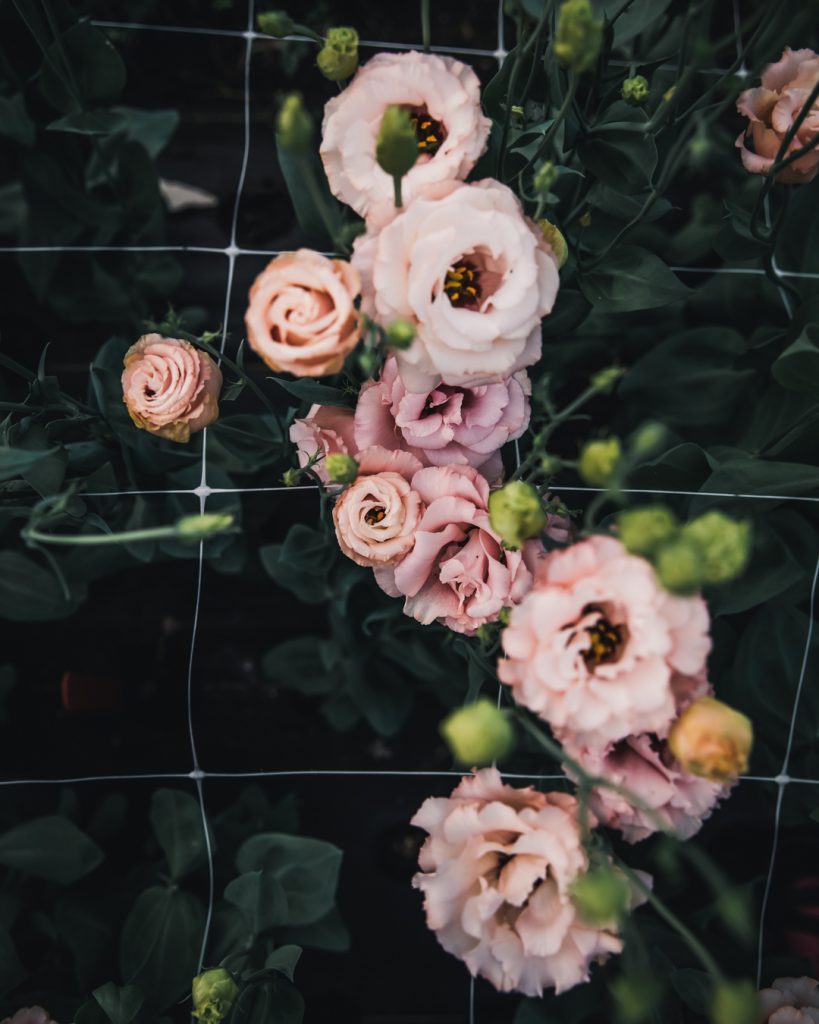
Propagation: BTS
“Unless one has an overwhelming desire for masochism, mature plugs should be purchased from reputable seedling producers” (SCF). HA! For a book that reads more like an encyclopedia (though a very valuable one), this comedic break from SCF made me spit out my coffee.
Growing lisianthus from seed can totally be done, and more and more growers are doing it! However, for me personally, it is a lot of babysitting, as lisianthus requires at least 12 weeks to get to a transplantable stage. Even though I am someone who prides herself in starting plants from seed, I just don’t find lisianthus worth the extra time and effort. I like to take a break in winter, so I don’t like to start sowing for the season until January at the earliest. We’ve started lisianthus from seed in January and had a successful late crop. For an earlier crop, we’d need to start sooner.
The most-common disadvantages to plugs that I hear from other growers are the cost and environmental impact (shipping and potential use of chemicals by greenhouses).
Personally, I much prefer plugs. The quality is top notch, and I definitely agree with Dowling’s point of consistency. When we grow from seed, our seedling environment (aka my basement) is not as ideal as the plug producers, so growth is inconsistent (meaning some plants are farther along than others, which is not ideal for timing harvests).
Because plugs are so consistent, we get a super-reliable crop and harvest, with less wasted space, less labor, and more time and space to focus on other seedlings. In an effort to streamline and simplify, I am only growing lisianthus from plugs in 2023. That’s not to say we won’t grow from seed again, just not this year.
I order plugs from Farmer Bailey (who brokers plugs from Gro n Sell), ideally in the 210 size, though I will order 125 if it’s all that’s available for a certain variety. I usually order October–December, based on availability (the Farmer Bailey team shares when new varieties are available via their email list and social media). Typically, I choose my shipment weeks based on when I plan to transplant, usually April–May. I spread the shipments out across these two months and put them straight into the ground when they get here (this goes against common wisdom of potting them up, but I’ve never had an issue, and I’ll share more about this in the Growing On section).
If you want to try seeds, I would order from Johnny’s or Ball, and I would follow Johnny’s instructions.

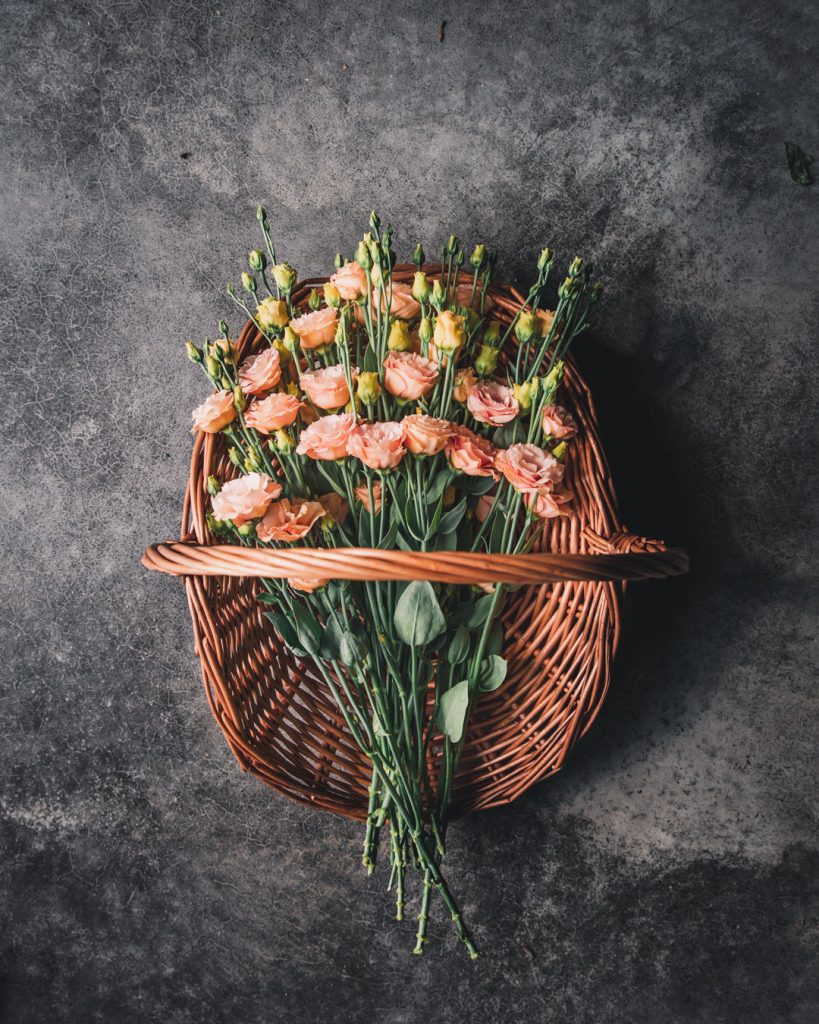
Environmental Factors: N&B
Although light has some impact on growth, temperature is far more important.
Photoperiod & Light Intensity
Photoperiod: Most flower farmers are growing under conditions of natural daylength in which plants require approximately 150 days to flower. If possible, short days (<12 hours) should be maintained during the seedling phase, but photoperiod is less important than temperature (SCF).
Light intensity: Although light does does not accelerate flowering, plants are more vigorous and produce more flowers in areas of high natural light intensity (SCF).
Temperature
Lisianthus has two distinct growing phases, according to the plant’s response to temperature.
Phase 1: Slow growth. Seedlings require up to 3 months to form approximately 3–5 leaf pairs (SCF). At seedling stage, Johnny’s recommends maintaining temperatures of 60-70°F (16-21°C), while Specialty Cut Flowers recommends 45–65F (7-18C). This ensures stem elongation, taller stems, and increased flower numbers (SCF).
Exposing germinating seedlings to high temperatures for as little as 3 days has been shown to reduce stem elongation, and more than 14 days of high temperature completely inhibited elongation even when plants were subsequently grown at lower temperatures (SCF).
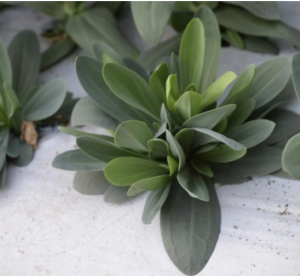
High temperatures at seedling stage can cause rosetting. Rosetting is when a plant fails to flower and instead produces a basal cluster of leaves (improper light and water can also cause this, but usually temperature is the culprit). According to SCF, temperatures above 70F (21C), particularly at night, result in rosetting of the plants, and should be completely avoided. Johnny’s recommends temperatures at 75–80F (24–27C) during the day and 60–65F (16–18C) at night. Once budding and flowering has initiated, rosetting is no longer a concern.
Though difficult, rosetting may be reversed by lowering the temperature to 50F (10C) for approximately 30 days (Johnny’s).
On the opposite end of the spectrum, research has shown that cooling seedlings for 5 weeks at 54F (12C) prior to greenhouse planting accelerated flowering by 10 days (SCF).
Phase 2: Stem elongation (bolting) stage and flowering, which lasts for about 3 months. Specialty Cut Flowers recommends nighttime temperatures of 65–70F (18–21C) at this stage. Once the fourth or fifth leaf pair is formed, temperatures above 80F (27C) can be tolerated without negatively affecting flower quality.
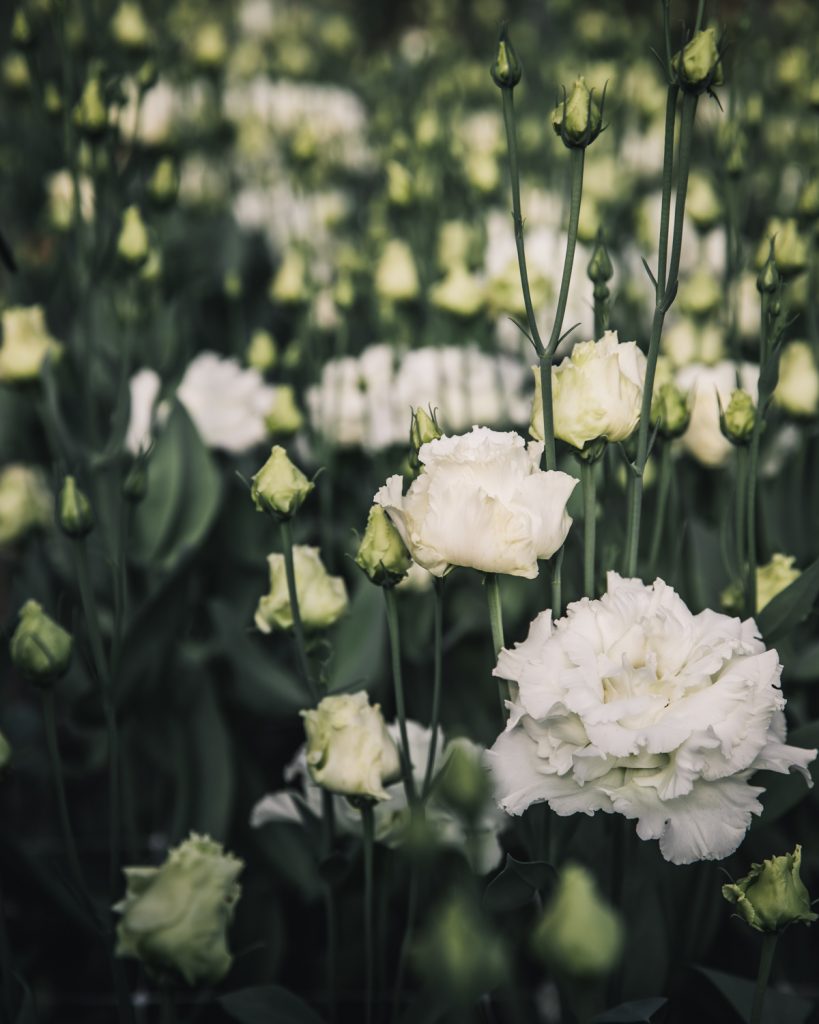
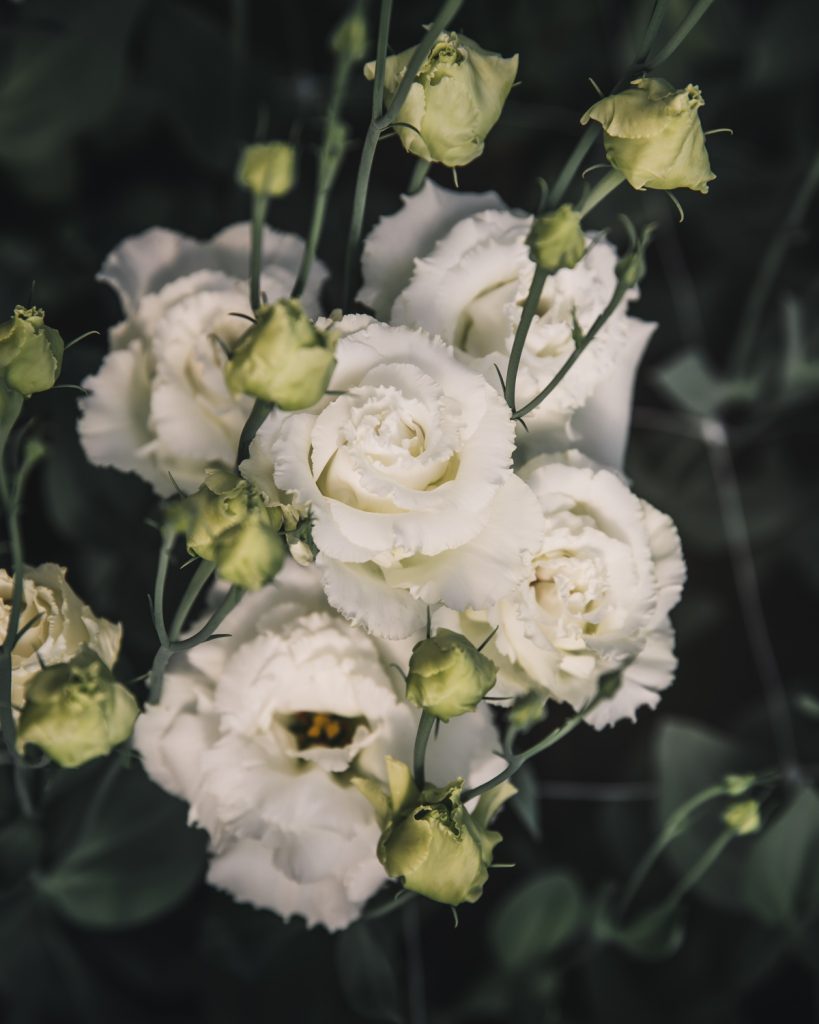
Environmental Factors: BTS
If you’re growing from seed, I think the most-important thing is to make sure lisianthus seedlings stay below 70F (21C). If you order plugs and are not able to transplant them right away, it’s important to keep them somewhere they will stay below 70F. For me, this is our garage. Sometimes, it can get quite cool, but it always stays above freezing (and temperatures in the 50s may even have a positive benefit).
We transplant in April/May when temperatures are still cool, on average (in April our average max temp is 57, while in May its 70). In fact, at this early stage, lisianthus are MUCH more tolerant of cold than they are of heat. You might actually be surprised just how tough they are! According to Farmer Bailey, lisianthus is tolerant of frost when it is young, and will be fine with temperatures down to 20F (–6C), assuming it is planted in the ground (they CANNOT handle these temps in a tray).
In our location, our springs can have major temperature swings (we’ve seen Aprils with temperature swings as low as teens and as high as 80F+). Even so, I haven’t experience stunted growth or rosetting because of this, and they’ve braved the cold like champs (though we plant under low tunnels or high tunnels). Occasionally, we’ll get a rosetted plant, but I just toss it, and don’t worry too much about it. If you’re wondering your average lows and highs by month, enter your Zip Code here. There are likely local records that can also supply this information.
Once summer hits, our average max temps are in the 80s F, and it’s not unusual for us to have extremely hot swings in the 90s. As I mentioned above, we haven’t experienced any issues with this. Reputable growers like Jennie Love, Farmer Bailey, David Dowling, and Johnny’s seem to find the same: When it comes time to flower in the summer, lisianthus like it dry and hot for best quality of blooms (this makes sense when we remember that lisianthus are a native prairie wildflower).
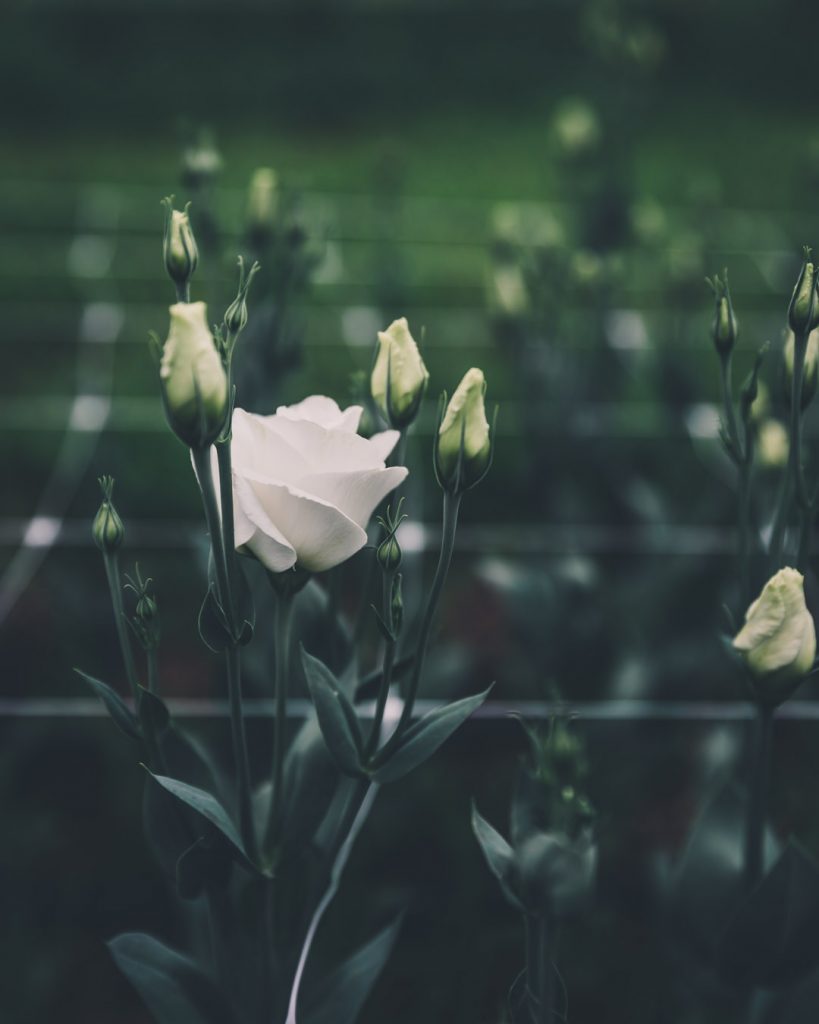
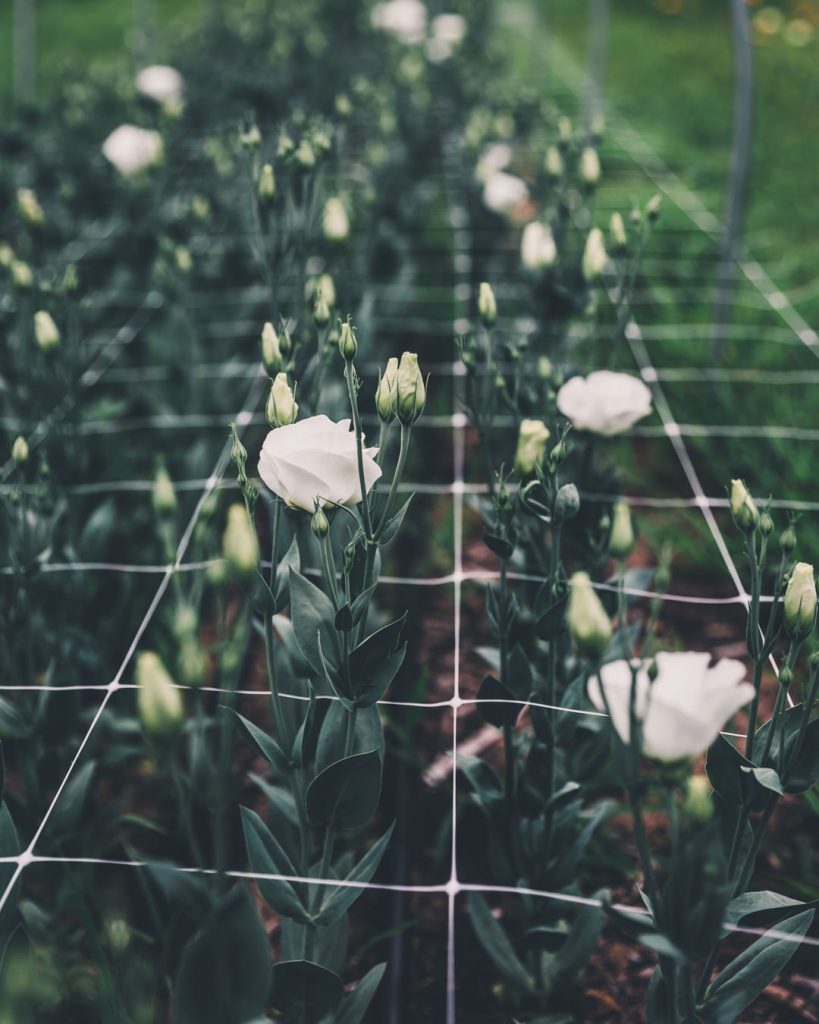
Field Performance: N&B
Historically, most lisianthus worldwide are greenhouse-produced, but more growers are successfully growing significant lisianthus in the field (SCF). While planting under cover is not required, it does help protect flowers from the elements, like heavy rains, which can help prevent disease, damage, and raindrop stains on petals.
Johnny’s recommends growing in a greenhouse (heated or unheated) or under any type of covered structure in the field (e.g., a low tunnel). Farmer Bailey prefers growing in a high tunnel, but comments that he knows growers who successfully grow in the field. Love writes that she used to grow in the field uncovered, but after a heavy rain year, she now covers with plastic if heavy rains are in the forecast (or frost blanket when temperature are unfavorable). She removes the plastic when the weather is warm and sunny (presumably, these are planted under low tunnels). Ziegler is entirely field-grown. Because she mentions avoiding dark colors that are prone to petal stains from rain drops, paying close attention to the weather, and harvesting before a heavy rain, one can reasonably assume she’s growing some if not all lisianthus uncovered.
Field Performance: BTS
You do NOT need a high tunnel to grow great lisianthus! Our first two years, we strictly grew lisianthus in the field under low tunnels. Low tunnels are an economical way to protect your crops. They are not difficult to construct, and are 100% worth it when it comes to growing lisianthus, IMO. Most growers recommend netting support, and the structure of a high tunnel is perfect for attaching netting, so covering it is just one extra step. Bare Mountain Farm has a wonderful 3-Part Series on constructing a low tunnel.
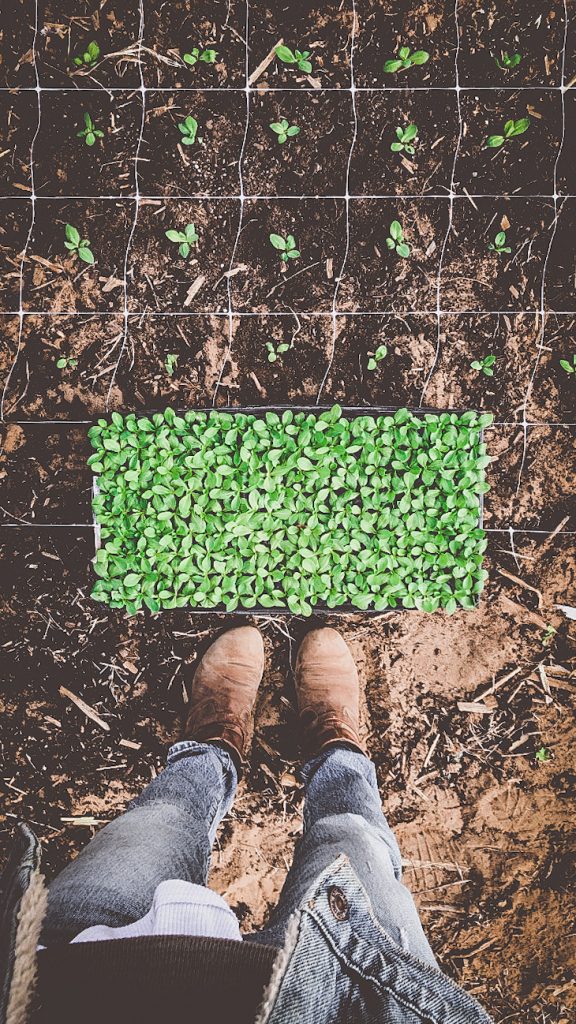
Transplanting: N&B
According to SCF, transplanting should happen when plants have at least 4 leaf pairs, but the larger the better. Potting up plugs to 48-cell trays resulted in better establishment in the field and faster harvests. Interestingly, Johnny’s recommends transplanting no later than the fourth leaf stage. Love has written that she purchases 210s and bumps up to 72-cell trays once they arrive, allowing them to grow on for about one month. Ziegler directly transplants 288s in the field, which David Dowling confirms works, as long as the seedlings are given extra care (most importantly, that they are watered in well). Farmer Bailey does both. They transplant the small plugs directly and also bump up to give plants a head start in their short growing season. Farmer Bailey recommends transplanting plugs within one week of shipment (bump up to 50 or 72-cell trays if unable to transplant right away).
Remember that lisianthus like cool temperatures when they are young. Though conditions vary, Farmer Bailey recommends that lisianthus should be planted out 2-4 weeks before your last frost date when growing in the field, or 4-6 weeks before that date if you are growing in a tunnel. Similarly, USU recommends transplanting 6 weeks before the last frost date in high tunnels and 2 weeks before in fields. For her field-planted lisianthus, Love writes that she transplants 2 weeks prior to her last frost date. For her field-planted lisianthus, Ziegler transplants 4–6 weeks prior to last frost.
Transplanting: BTS
I have always transplanted 210 and 125-cell trays of lisianthus directly into the field. This seems crazy, because they are SO tiny. As long as you make sure they get plenty of water while establishing, they do just fine (because they are so small, though, their roots can easily dry out). Our soil is more sand than loam, but even still, as long as I make sure to keep them watered while they’re little, they do great!
As mentioned earlier, I transplant April through May (meaning I stagger plantings for a longer harvest period). So, I may have a shipment scheduled for mid-April, late-April, and mid-May, for example. Our last frost is mid-Mayish (Wisconsin weather is weird, ya’all), so I will plant as early as 4–6 weeks before our last frost.
An important note is that I *do* watch the weather very closely as spring can be dicey for us. I use local weather data from the past 30 years, but even then, anomalies happen. Here’s a little excerpt from one of my newsletters from April 13, 2020 (another great reason to start a newsletter is you can look back on them):
I am Mother Nature’s b*tch. Here are some words used by the National Weather Service for the next few days: arctic air, heavy and blowing snow, wind gusts as high as 40 mph, snow accumulations up to 10 inches. Temps as low as 15.
What dummy would plant flowers in this weather?
It Me.
Of course, this wasn’t in the forecast when we planted, but before you think I am totally nuts, when planning out the season, I used data from the past 30 years to make decisions (yes, I am a huge nerd). While some flowers can handle cold (hardy annuals), I certainly was not anticipating this.
Averages based on the past 30 years? Daily minimum temp: 37.9F. The average monthly snowfall for April? 1.7 inches. In fact, when I looked back at records for the past 12 years, only once did the temperature drop below 20 degrees in April (2018).
Am I obsessing over something I can’t control? Maybe. Use the information you have to make the best decision you can, then move on. It will be what it will be.
One of the goals I wrote down for myself starting this venture was pushing the limits to see what’s possible in order to share the successes (and failures) with others. Here we go I guess!
It’s funny looking back on that 🙂
When I was brand-new to flower farming, I reached out to a grower I admired on Instagram (Laura from Poppin’ Blossoms Flower Farm). Her pictures are what introduced me to lisianthus. I asked her the variety and where she sourced them, and she was more-than generous with her answer (flower people are the best people). The variety in question was ‘Arena Apricot’ one I still grow today. She ordered from Farmer Bailey (who I still order from today).
She also then shared with me that she always got the larger size, because you’re paying for shipping either way, and the price difference between the two is not that much in the grand scheme of things. She also explained that she didn’t bother with potting up and transplanted directly into the field. Wow! I still think of the amount of time she saved me by being so generous with her information and am forever grateful for her kindness.
I still follow these exact recommendations today. However, this year, with the addition of our high tunnel, I’m experimenting with an early March shipment to see if I can get an even earlier crop. My plan is to pot them up to give them a head start and transplant into the high tunnel once conditions are favorable.
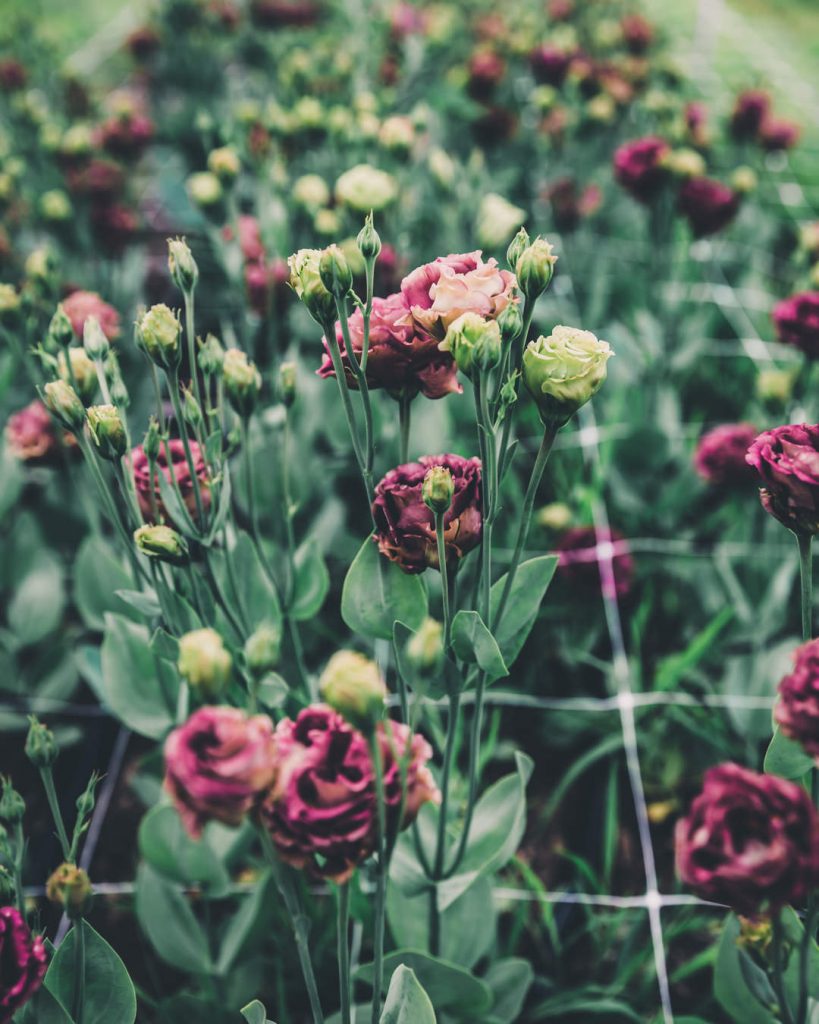
Support, Plant Spacing, & Weed Management: N&B
Support
Most resources recommend at least one layer of support netting, usually two (Farmer Bailey comedically comments that he’s suspect of anyone who only uses one). Ziegler and Dowling laugh that they have NEVER used more than one layer of support netting on any crop. Interestingly, Jennie Love writes that she chooses specific varieties that have allowed her to grow lisianthus completely net free! You can read more about her recommended varieties for net-free growing here.
Spacing
For plant spacing, Johnny’s Selected Seeds recommends 4–8″ spacing. USU trials found that spacing plants 6 inches apart maximized production, while allowing air circulation between the plants and light penetration to the leaves. Love writes that she plants on 3″ centers, sometimes planting 2 plants in one hole when space is tight. Dowling and Ziegler both recommend planting 6″ spacing the following way: Using the 6″ netting as a guide, imagine it as a checkerboard and plant 2 in red, 1 in black, and so on. Farmer Bailey recommends 6″ spacing with 2 plants per hole. Interestingly, when visiting Japan, Bailey found that growers left an unplanted strip in the middle of the beds to increase airflow and act as a barrier against fusarium. For the same reasons, they leave a 6-12″ gap between varieties when planting their lisianthus beds.
Weed Management
Because lisianthus are so slow to grow and small when transplanted, weed management must be considered. Most growers recommend weed barrier such as woven landscape fabric like Sunbelt or black mats like Flora-Flo. However, weed barrier does not mean one does not need to weed. Weeding still must be done, especially when plants are small.
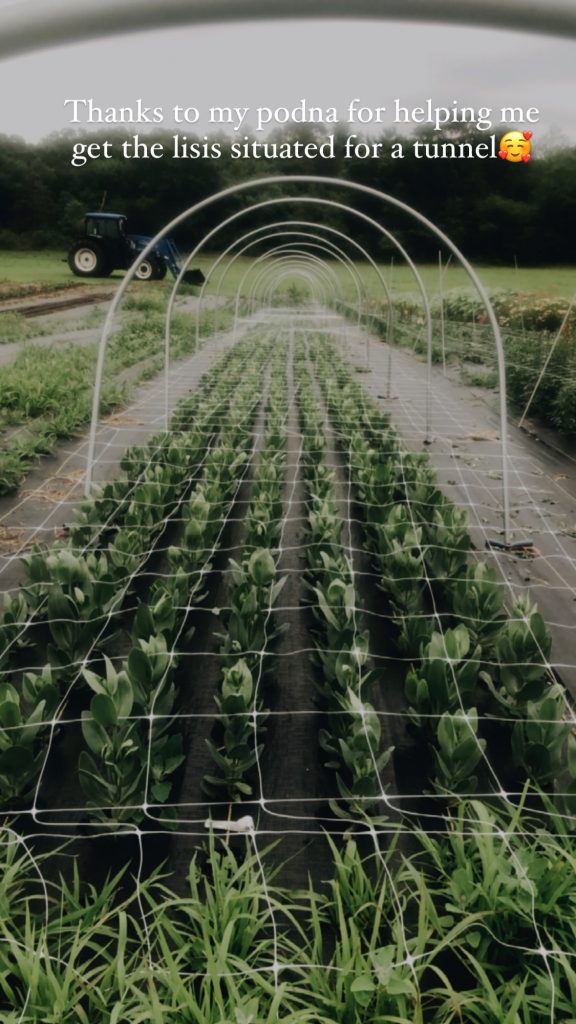
Support, Plant Spacing, & Weed Management: BTS
Support
I’m definitely suspect: we only use one layer of support netting on our lisianthus. The netting we use is hortonova netting. While we purchase most items from Green Grove Supply in WI, I’ve oddly found that this netting is the cheapest from Amazon. Economically, you are almost always better off purchasing from a local supplier if you have one.
While we’ve always only used one layer of netting, I did have late-season lisianthus in the high tunnel topple over. I believe this was more-so because the netting kept sliding down on the hoops. Dowling recommended putting a t-post in the center of the beds for extra support on the netting, which I may try this next season. In any case, I was still able to use the flowers that toppled over for design work (I love wonky stems).
Spacing
We space our lisianthus 6″ apart. In 2022, I tried spacing closer, based on Dowling’s checker board recommendation. Many growers successfully grow lisianthus super tight. Although it’s anecdotal, I found that my experience more-closely resembled the USU trials. The close spacing was fine, but I felt that 6″ spacing gave me the best quality blooms. I will likely stick to 6″ spacing, but double up when space is tight.
Weed Management
For weed control, I grow in black landscape fabric (Sunbelt). You can see the product on Amazon, but we get a significantly better deal at our local greenhouse supplier, so I’d shop around locally for landscape fabric if you’re able to do so.
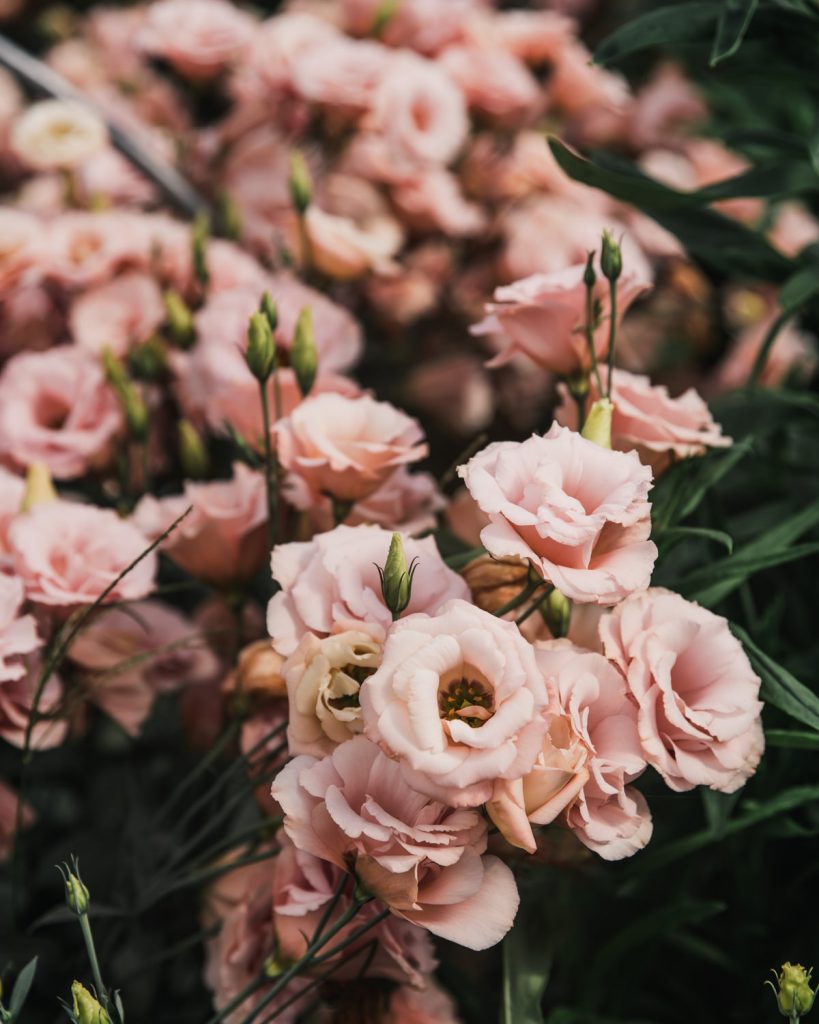
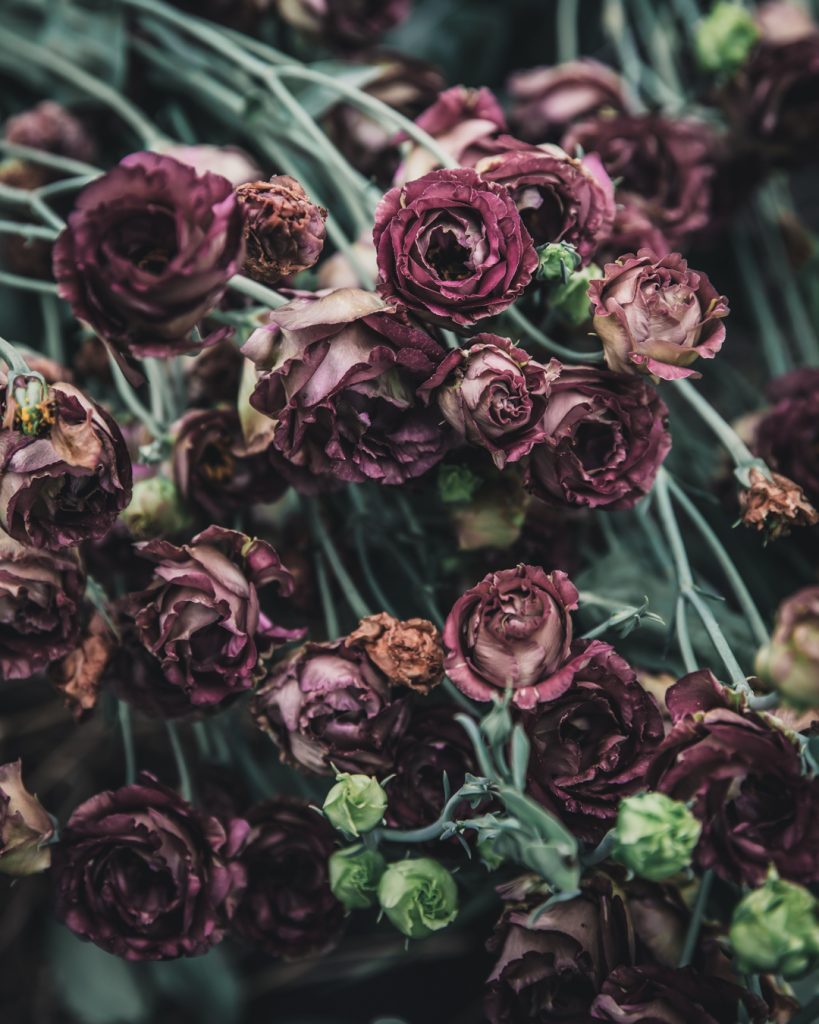
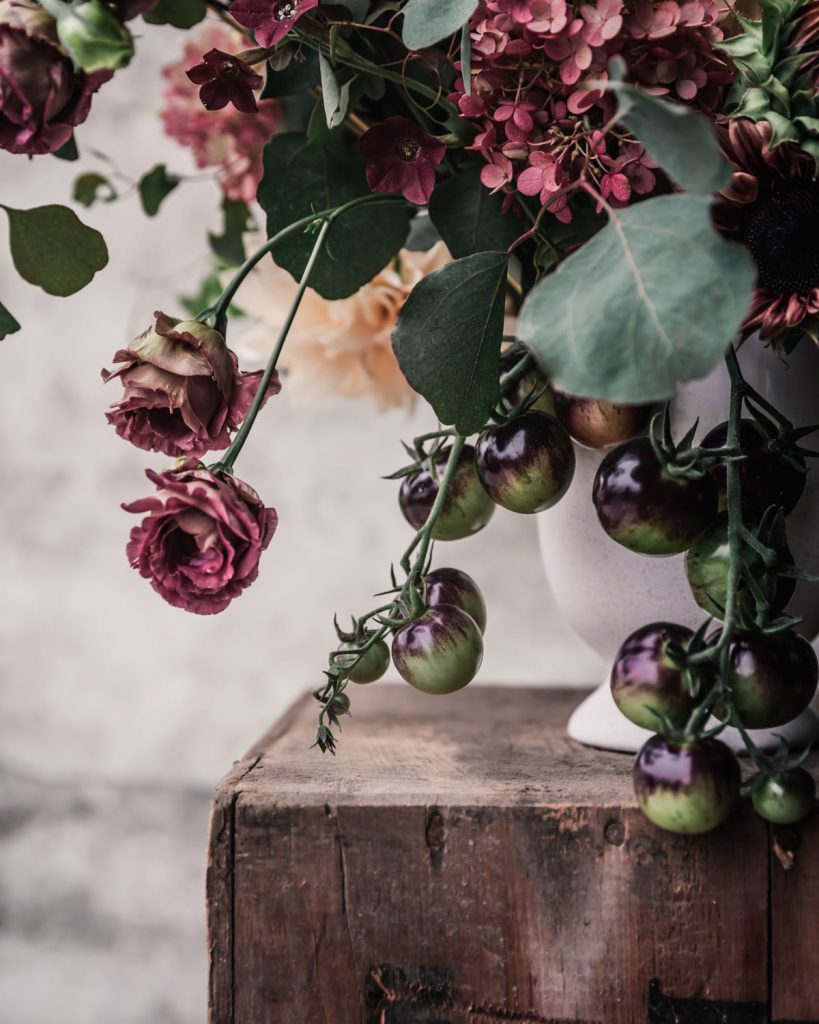
Drainage & Irrigation: N&B
Good drainage is absolutely essential for lisianthus: plant in raised beds if drainage is a concern. Uniform irrigation is necessary after transplanting to the field; drying out at this stage reduces yield and quality. Drip Irrigation is recommended by all sources versus overhead watering once plants are more mature due to disease pressure. Furthermore, water drops will stain petals, especially on darker varieties.
Drainage & Irrigation: N&B
As mentioned, I grow in super sandy soil. While drainage is not a problem (in fact, it’s hard to hold nutrients because we have so much drainage), we do have to baby the seedlings long. I usually am watering them overhead in addition to drip lines during the first few weeks. Once they’ve established, the drip lines take over as the sole water source. How much you water will be dependent on your soil structure and rain levels.
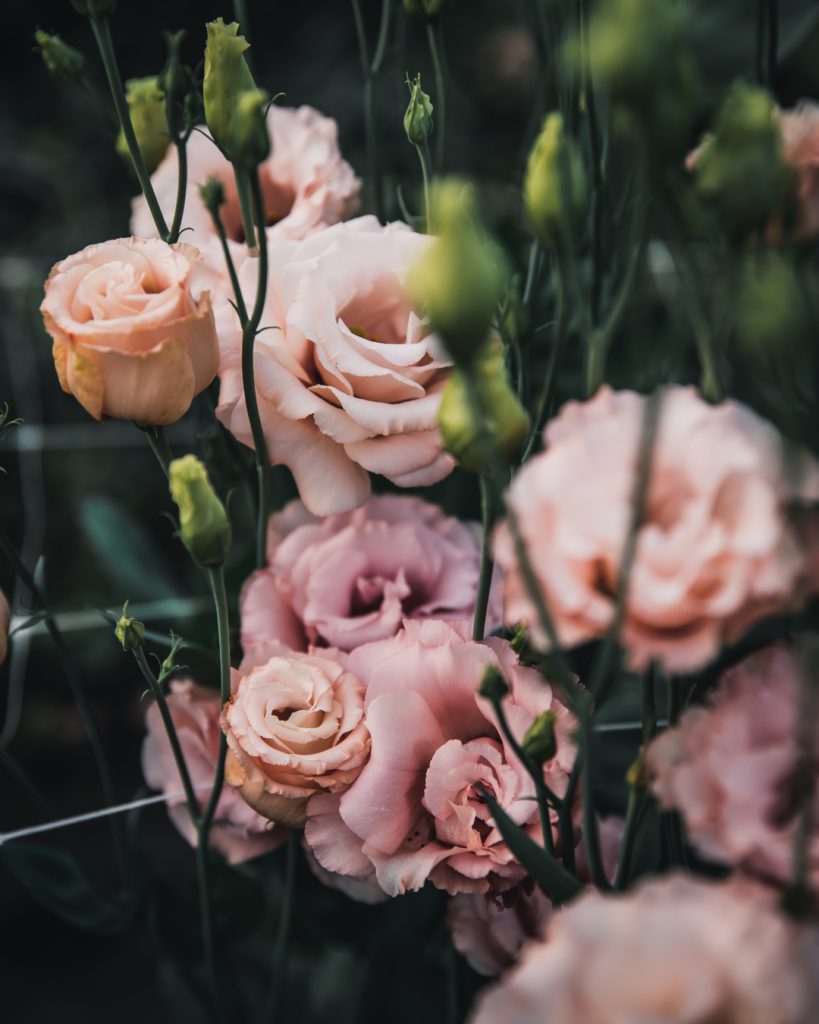
Nutrition: N&B
According to Specialty Cut Flowers, a slow-release fertilizer (usually a 3-month formulation) can be provided immediately after transplanting to the field. If applying nitrogen, use a nitrate form. Potassium should be equal to nitrogen (e.g., 15-0-15), and supplemental calcium is recommended (SCF). Farmer Bailey recommends testing soil and amending towards a neutral pH and general fertility. Love writes that she amends her lisianthus beds with compost, cotton seed meal, and green potash and foliar feeds with an emulsified mix of fish powder, bat guano, and kelp powder. According USU, Lisianthus has moderate nutrient requirements. They recommend 0.34 pounds of nitrogen (N) per 100 square feet each year, and that phosphorous and potassium should only be added based on a soil test.
Nutrition: BTS
We always amend our soil based on our most-recent soil test. We get our soil amendments from Ohio Earth Food in Wisconin. Each bed also gets compost and foliar feeding throughout the season. We get compost delivered by the truckload from a local suppler (Green Earth Compost). I have an entire ebook that outlines how we amend our soil organically, and I’ve made that available for you here. (including how to read, interpret, and calculate fertilizer requirements).
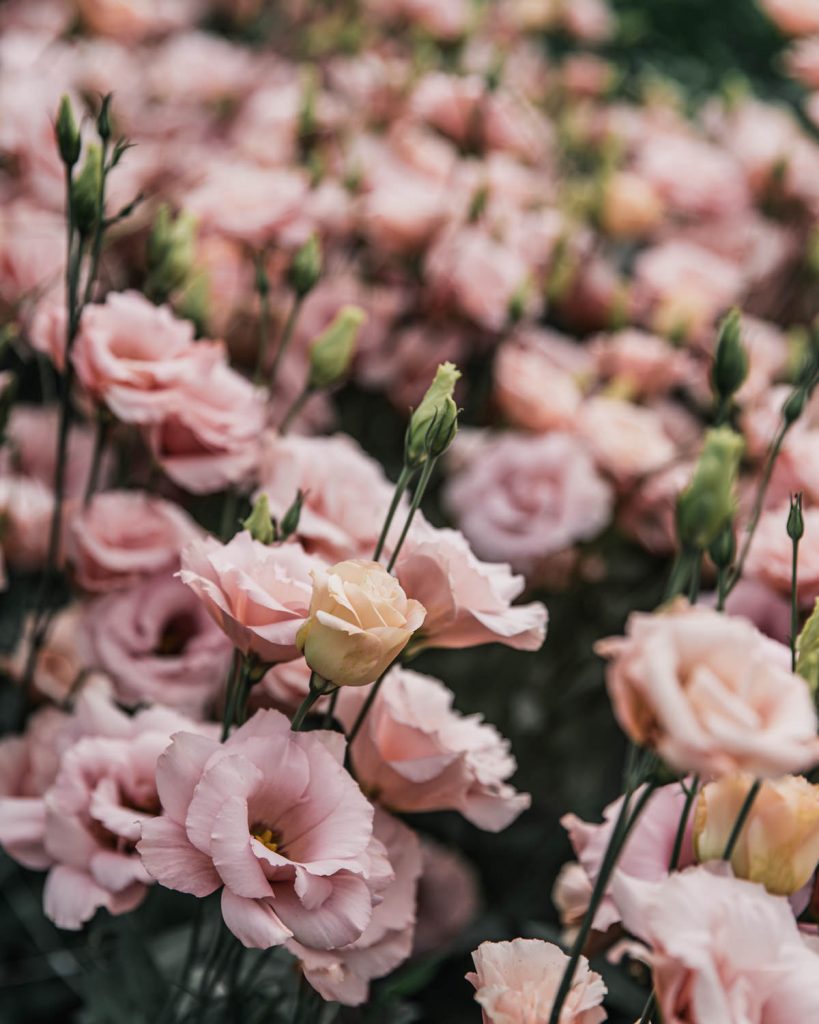
Pinching & Bud Triming: N&B
While lisianthus can be pinched, it seems that most growers do not pinch them, including Farmer Bailey and Jennie Love. USU found that while pinching resulted in more stems, it reduced stem length by as much as 50%.
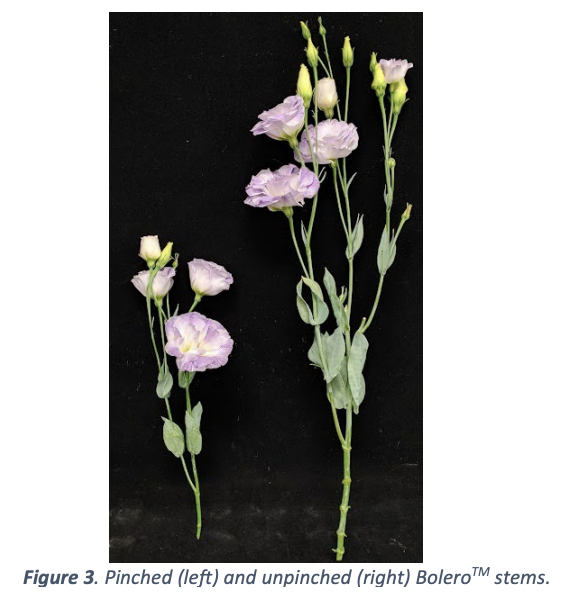
It is fairly commonly known that cutting out the first flower will allow more buds to open up simultaneously on each stem. Some growers, like Ziegler, cut and sell this first bloom for short-design work, while others, like Love snip the spent bloom at harvest time (because it will have faded by the time the marketable blooms come on). On the other hand, Farmer Bailey cuts the first bud when still immature to direct the plant’s resources to the next set of buds. Farmer Bailey learned that this is what esteemed Japanese growers do, as well as prune their lisianthus to allow only a few blooms to develop per stem, resulting in much larger flowers.
Pinching & Bud Triming: BTS
I do not pinch my lisianthus. I do cut out the first bloom to encourage the remaining buds to open up more simultaneously. I don’t always catch it, so I will also snip out any icky first bloom at harvest time. I also LOVE using these first blooms for short design work. We sell mini mason jars and they are perfect for this. I’ve also used them in floral wreaths, small wedding work, and once even created a string of lisianthus blooms used for a booth at a local cancer walk. The point is, these little blooms are great for a little extra income aside from the main stem, win!
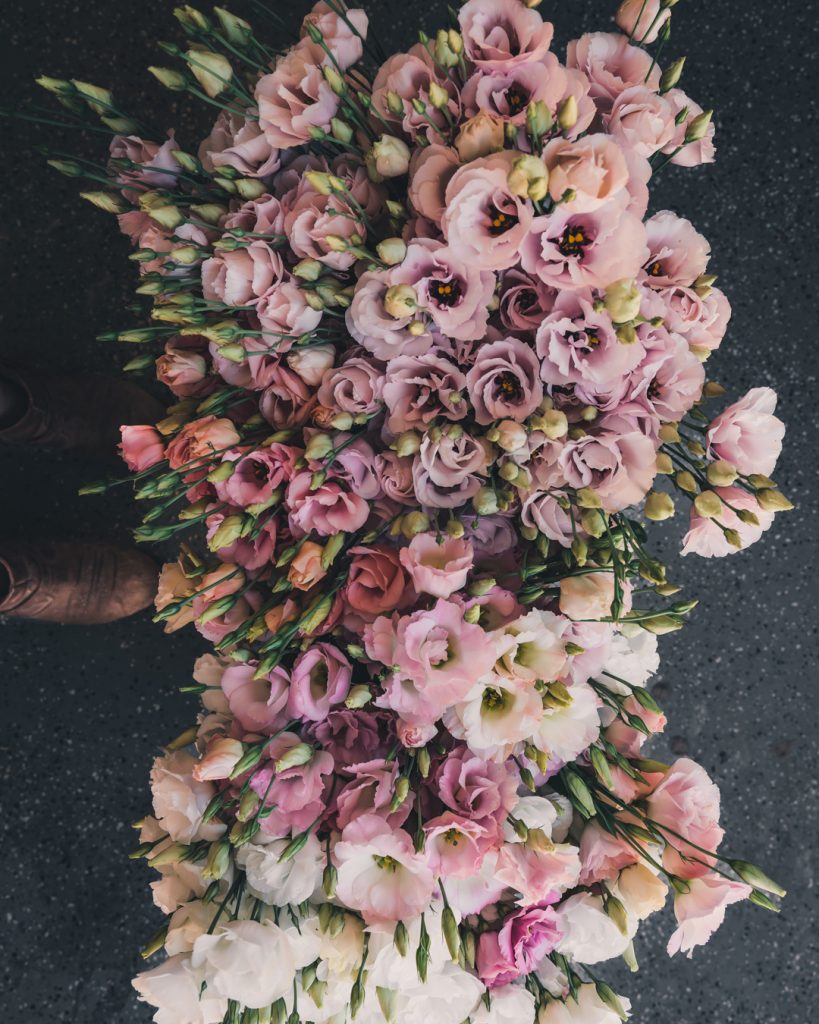
Bloom Period: N&B
Lisianthus are 150 days to maturity, so we’re looking at about 5 to 6 months from seed to bloom time (factoring in germination). Plugs, depending on the size ordered, have usually been growing for about 12 weeks by the time they are delivered to you.
Bloom Period: BTS
In the past, our earliest transplants were in April and we would have blooms starting in mid-July. We’re transplanting from different groups April through May, so we usually have lisianthus blooms into September.
Harvest: N&B
Postharvest Handling and SCF recommend harvesting when one flower is fully open and another has started to open for wholesale. And for retail, allowing up to three buds to open or show good color. Farmer Bailey recommends allowing 3 to 4 buds to open, while Ziegler and Dowling recommend allowing either 4 buds or half the amount of buds to open.
When harvesting, cut close to the base to allow for additional flushes. Dowling comments that he harvests by snapping at the base like asparagus, but to be cautious about lifting the roots up. Strip all but the top few leaves.
If growing uncovered in the field, Dowling and Farmer Bailey suggest avoiding the ruffly-bloom varieties, as they hold more rainwater, though they also comment that many growers are able to grow these successfully in the field. Love and Ziegler, who both grow field lisianthus, recommend harvesting early when heavy rain is in the forecast (lisianthus has great vase life, afterall)!
Harvest: BTS
Because the majority of our customers are retail, I wait to harvest until at least 3 blooms are open. In a pinch, if I need flowers early, I’ll cut them sooner. I’ll also cut when 4 or more are open! Lisianthus is really quite forgiving in this regard (unlike something like a tulip, which must be harvested right away once it’s ready).
I’m curious about Dowling’s method of snapping, because this sounds like it would be more efficient, but I always just cut (low on the plant, only leaving a couple sets of leaves).
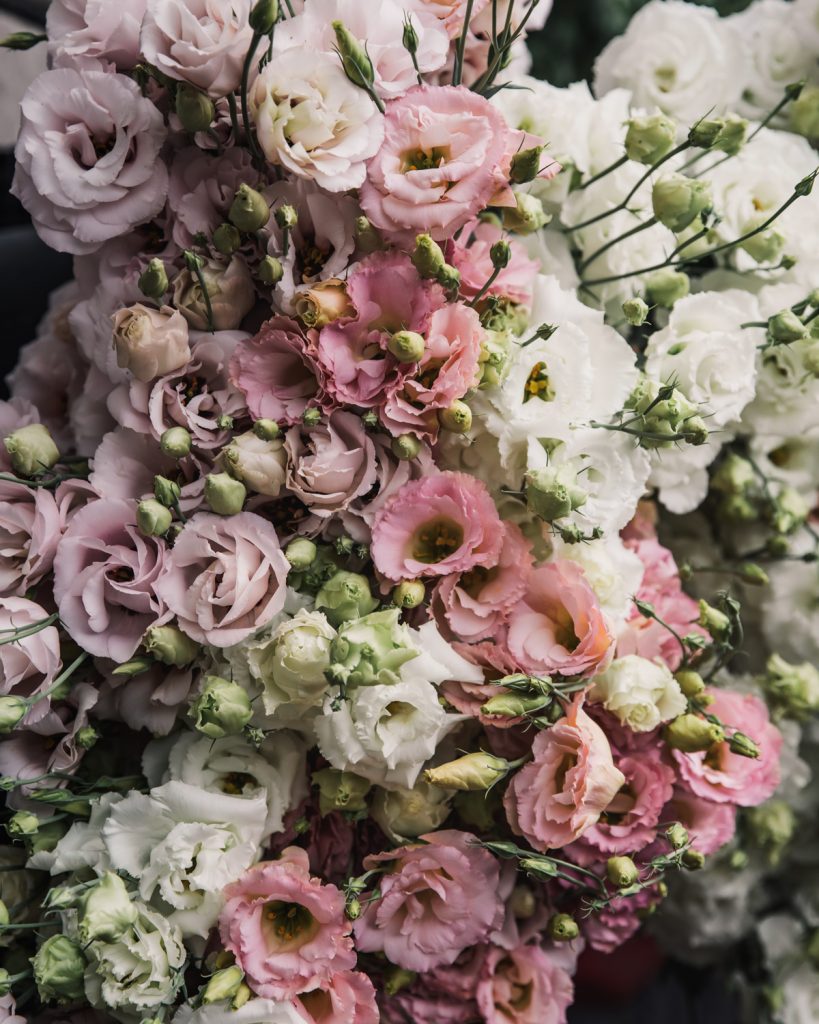
Post-Harvest Treatment and Storage: N&B
Vase life amongst most sources states 10–15 days, with Farmer Bailey noting that up to 21 is not uncommon. Postharvest Handling and Johnny’s recommend storing lisianthus in a cooler at 35–41F (2–5C). Postharvest Handling says lisianthus can be stored dry for 2–3 days or longer in water. However, they note that wet storage for a week can reduce vase life by 3 days. Love stores her lisianthus between 42–48F (6–9C), because in her experience, they resent being below 40F (4C). She writes she can store up to 2 weeks for use in weddings and events and up to one week for markets. USU recommends storing in a cooler at 40F (4C) for up to 4 days.
Lisianthus shows geotropic responses, meaning it will bend upwards, so plants should be stored upright. Small buds may fail to develop, and larger buds that open after harvest tend to fade in color, though the use of flower food may improve this, according to Postharvest Handling.
Postharvest Handling, SCF, Johnny’s, USU, and Dowling recommend storing with a floral preservative. According to Farmer Bailey, “Lisianthus doesn’t need much in the way of post harvest treatment. I cut into a holding solution (such as Chrysal 2), which keeps bacterial levels low and feeds those developing buds.”
Post-Harvest Treatment and Storage: BTS
I cut into holding solution (Chrysal 2) and store in the cooler (38–41F).
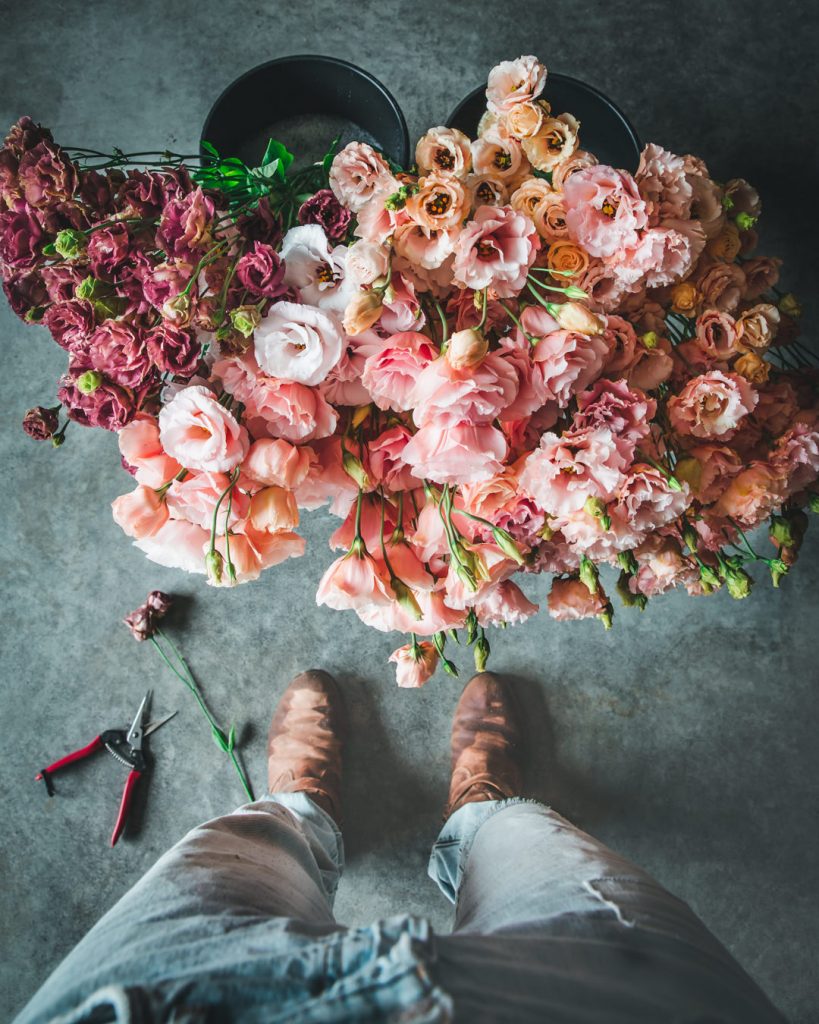
Additional Flushes: N&B
Where seasons are longer, it’s possible to see two, even three flushes. Most sources recommend cutting the first harvest close the base, leaving only a couple sets of leaves.
Additional Flushes: BTS
In our short growing season, we don’t see additional flushes. We get one great main crop and are more-than happy with that! We’ll see what happens with my attempt at a super-early crop in 2023.
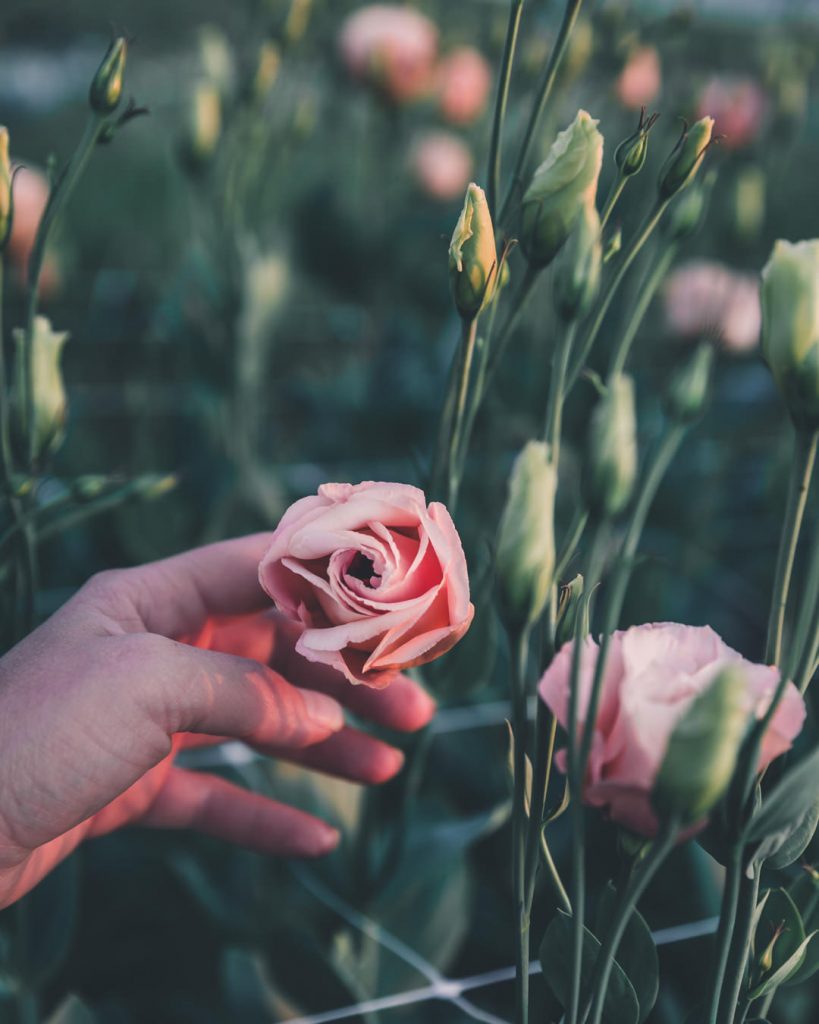
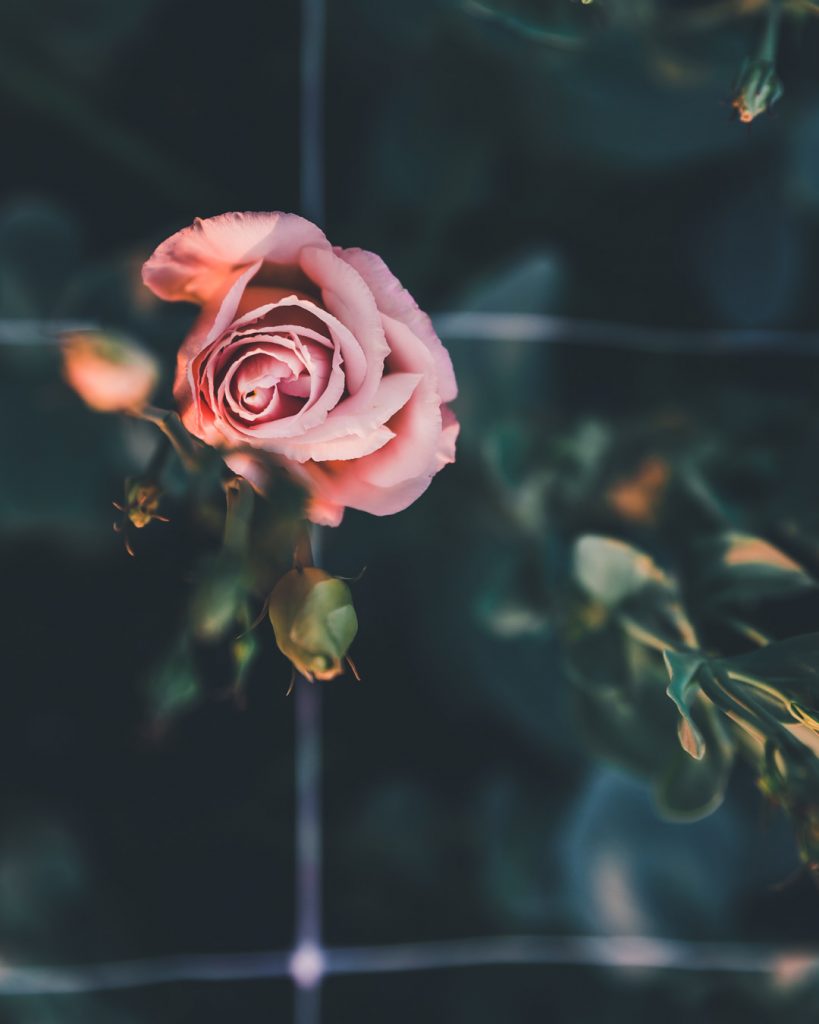
Overwintering: N&B
According to SCF, the key benefit to overwintering is that plants produce multiple stems the next spring, each with greater stem length and diameter than those produced from annual cropping. Dowling comments that plants can be successfully overwintered in high tunnels in Zone 6 and higher, though should only be tried with healthy-looking plants. According to Farmer Bailey, “There is no advantage to planting in the fall for growers in the more northerly 80% of the US. If you routinely see freezes and snow, just wait until spring. For growers in Florida and the Gulf Coast to Texas, fall planting will work well. Just remember to plant in the coolest part of your year so the plants can settle in before extreme heat comes back.”
Overwintering: BTS
We do not overwinter lisianthus.
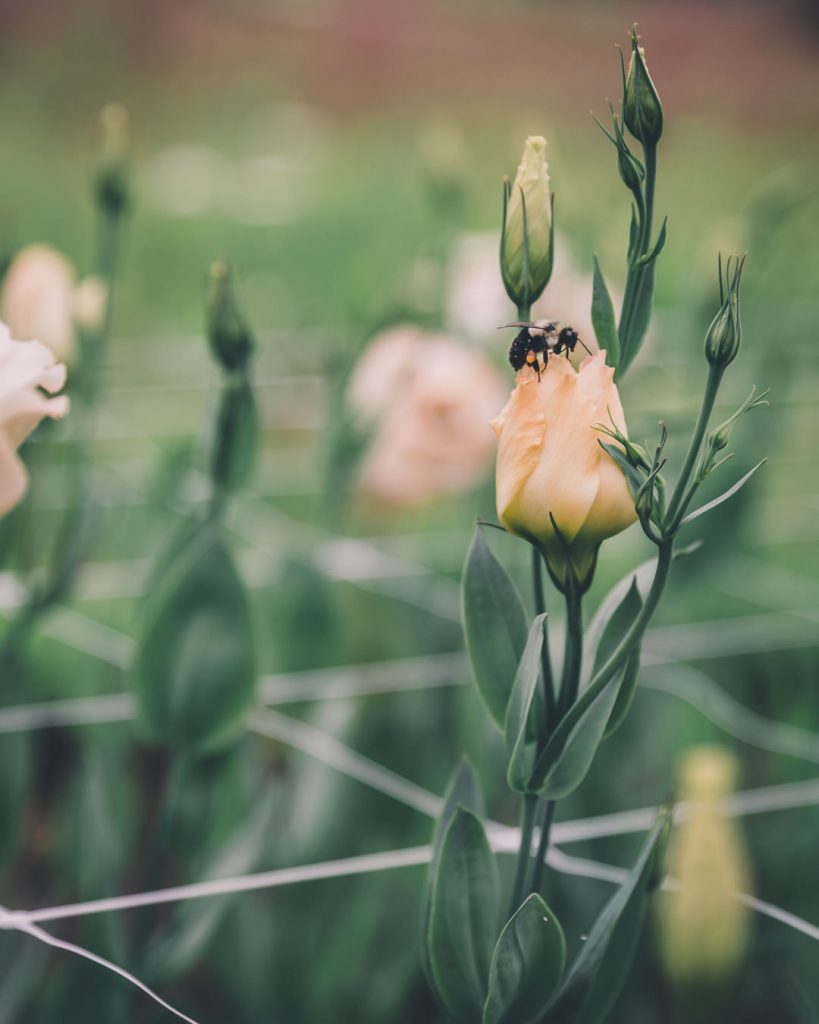
Pests & Disease: N&B
According to Johnny’s, the most-common pests of lisianthus are aphids, leaf miners, thrips, and whiteflies. Lisianthus is susceptible to botrytis, fusarium, and other diseases. They recommend crop rotation to prevent build-up and pests in the soil, but they also have a library of pest and disease controls on their website.
USU shared the following table of pests and diseases.
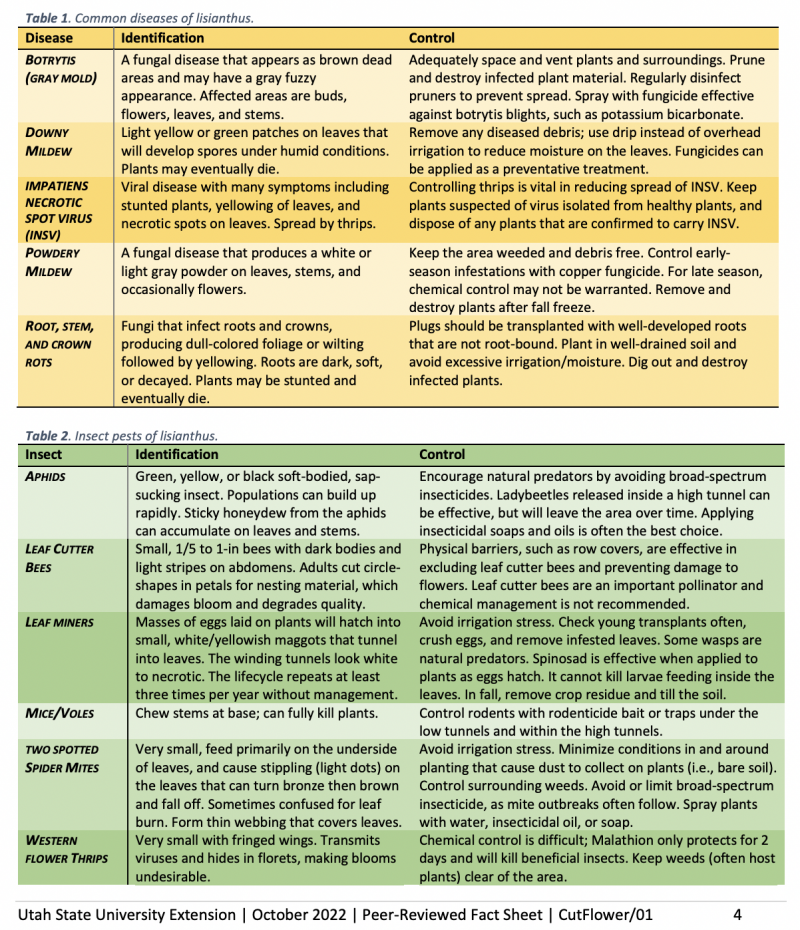
Farmer Bailey writes that fusarium is biggest disease facing lisianthus. Dowling also mentions root pathogens and comments that thrips are an issue on darker-colored lisianthus, but are less of a concern on light-colored lisianthus.
SCF, Johnny’s, USU, Farmer Bailey, and David Dowling all recommend fungicides for lisianthus, with RootShield commonly mentioned. RootShield is an all-natural, preventative biological fungicide.
Pests & Disease: BTS
Thus far, we haven’t had any major pest issues with our lisianthus (knock on wood). It’s hard for me to say what control we’d implement if an issue was persistent (if any). I tend to let nature do its thing, as I would be worried about impacting the beneficials. However, I did release ladybugs and green lacewings in our high tunnel last year, but it’s hard to tell what impact that had. I truly believe in creating as diverse as an ecosystem as possible, so we grow a lot different plants, and always practice crop rotation.
I’ve never used a fungicide on my lisianthus, though I may employ RootShield in the high tunnel as a preventative.
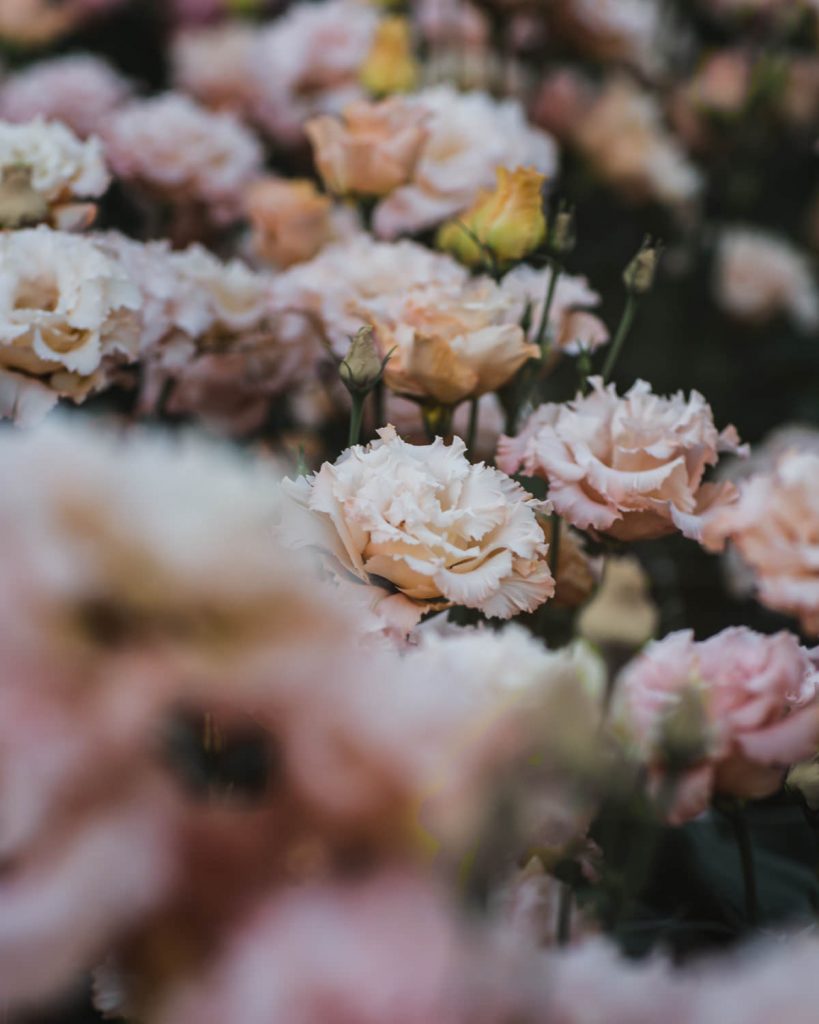
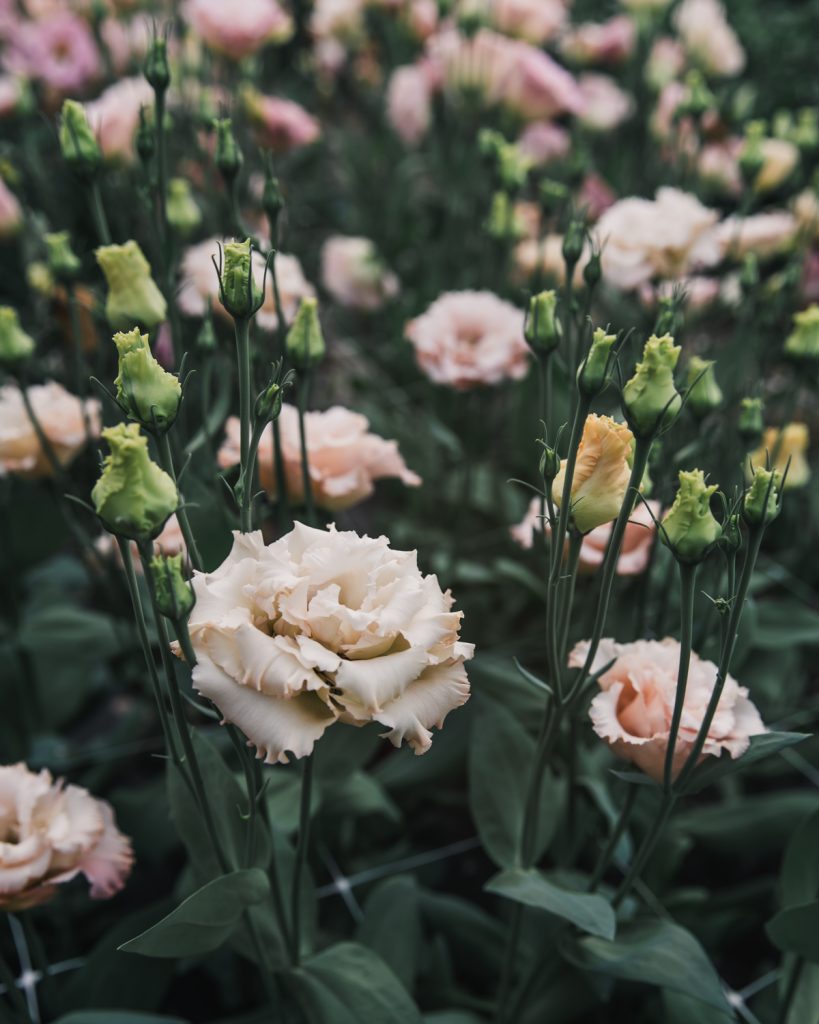
Variety Selection: N&B
Groups
Lisianthus are often listed in Groups (Group 1, 2, 3, 4, and even 5, though those are not commonly available in the U.S.). As Farmer Bailey explains, “Lisianthus varieties are genetically programmed to enter their reproductive phase earlier or later than others. Group 1 Lisianthus will enter their flowering stage (reproductive stage) earlier than Group 2 plants, followed by Group 3 and Group 4. By planting some of each group, you naturally stagger your harvest window as you have some early bloomers, some late bloomers, and some in between.”
Below is a chart from Johnny’s distinguishing each group:
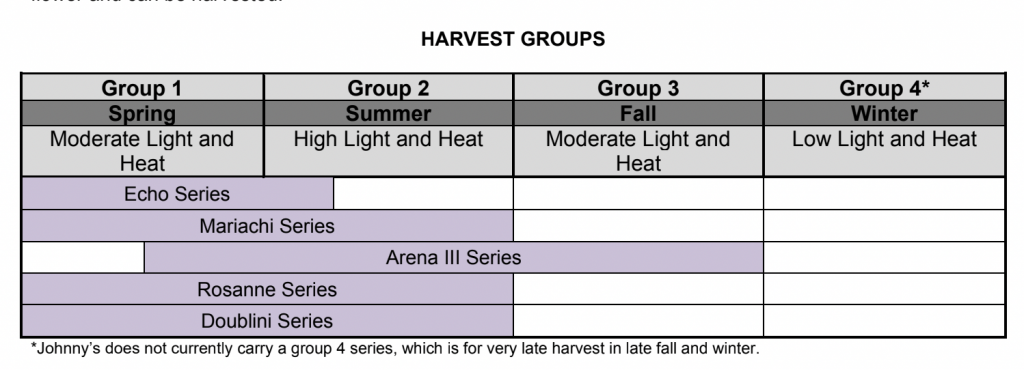
According to David Dowling, the harvest time between the groups is only a few weeks, so he advises first focusing on variety for color and form. Interestingly, he also suggests that earlier groups can have smaller blooms and shorter stems because they’re genetically programmed to produce earlier.
Varietes
Most sources suggest choosing varieties based on color and form, since the varieties are the same plant, these are the biggest differentiators. There are so many forms and colors, it’s impossible to list all recommendations. However, here are a few notable recommendations that might be valuable to field growers:
Ziegler noted that Echo and Mariachi in the field were shorter than other varieties, and Dowling comments this was likely because they are from earlier Groups 1 or 2 (which can have smaller blooms and shorter stems due to the shorter flowering time). However, Love writes that she likes the Echo series for field production, especially without netting. Both Love and Ziegler mention liking the ABC series, with Ziegler stating they can easily get to 48″ for her in the field. Many sources mention liking Rosanne series, though certain colors are better for certain markets. Many growers recommend avoiding dark colors or ruffly blooms when growing in the field without cover (especially in areas with heavy rain). Farmer Bailey specifically recommends avoiding Voyage, Celeb, and Corelli (though also comments that many growers still do grow them successfully in the field). Dowling mentions the large, ruffly Sumika varieties from Japan as a favorite.
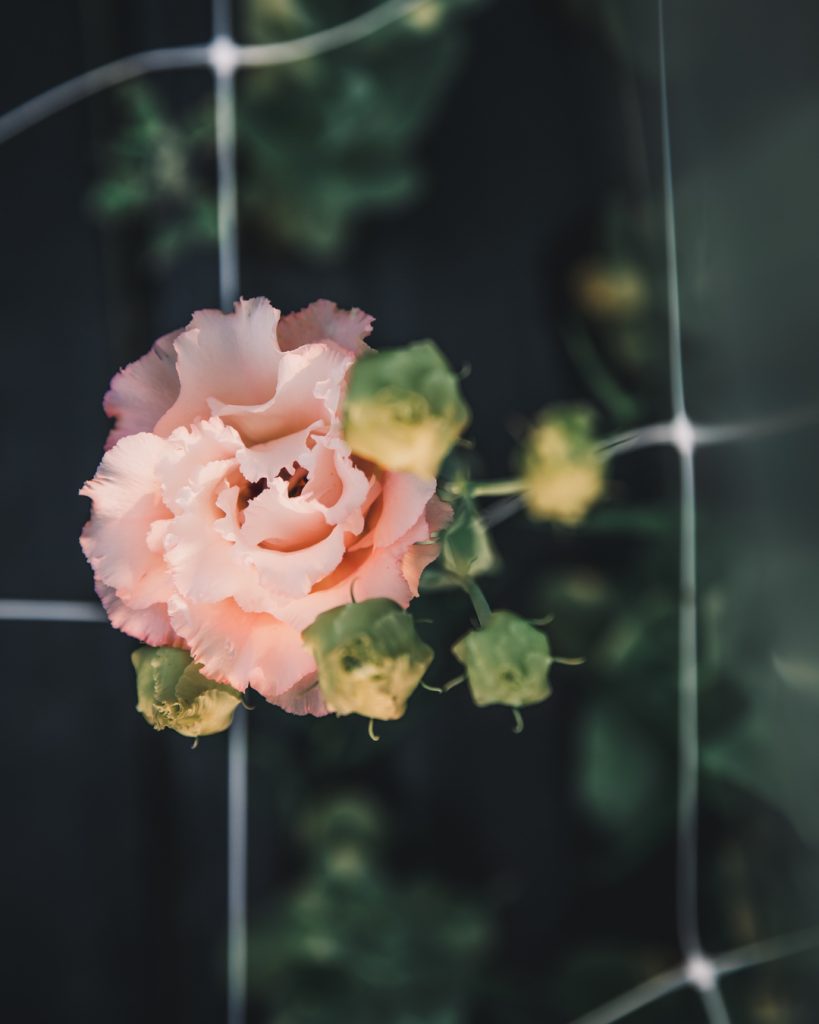
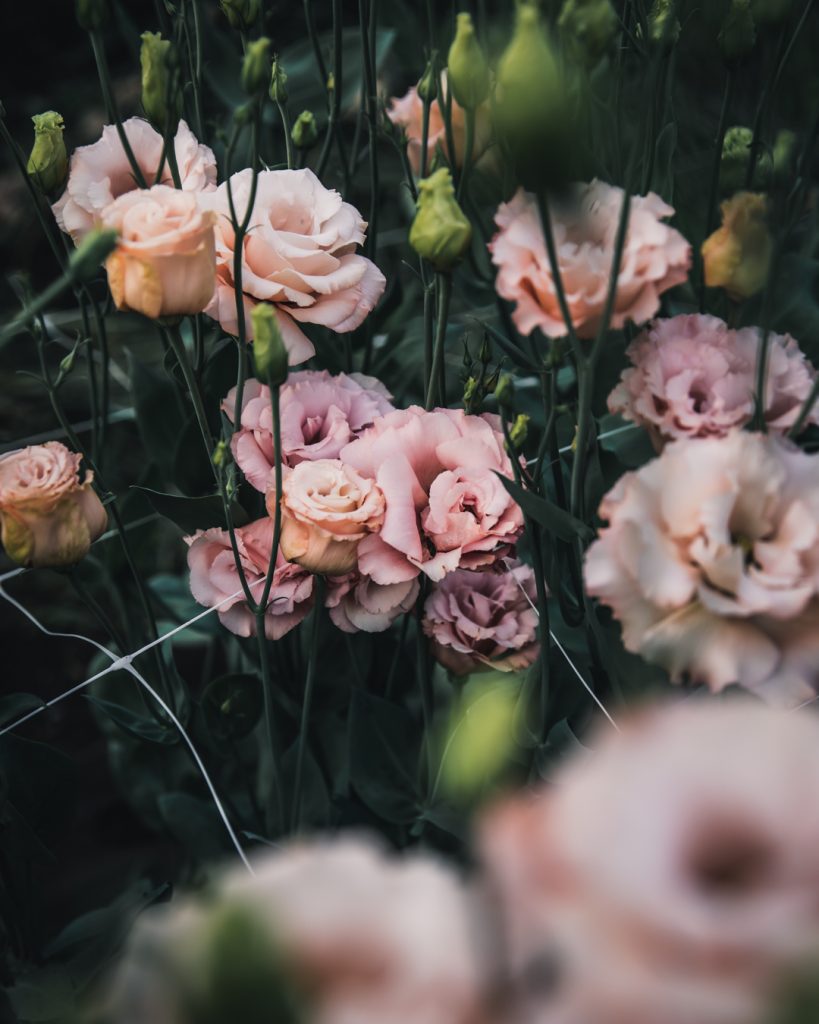
Variety Selection: BTS
Honestly, I’m with Farmer Bailey and say, grow what you like! If you like a certain color or form, grow it! For researching available varieties, I’d suggest looking at Johnny’s seed selection of lisianthus and Farmer Bailey’s plug selection.
Groups
I do select different groups to try and have a staggered harvest, but I don’t focus too much on this. I am more interested in the colors and forms. If different groups are the same age and planted at the same time, they do flower in different intervals, usually a few weeks between the different groups.
In my experience, the earlier groups might be sliiiiightly shorter, but not by that much and not across the board. Certainly, some varieties are shorter by nature (like the smaller ‘Doublini’ series), but all lisianthus I’ve grown have more-than adequate stem length (and this is coming from someone who is growing in less-than ideal soil conditions).
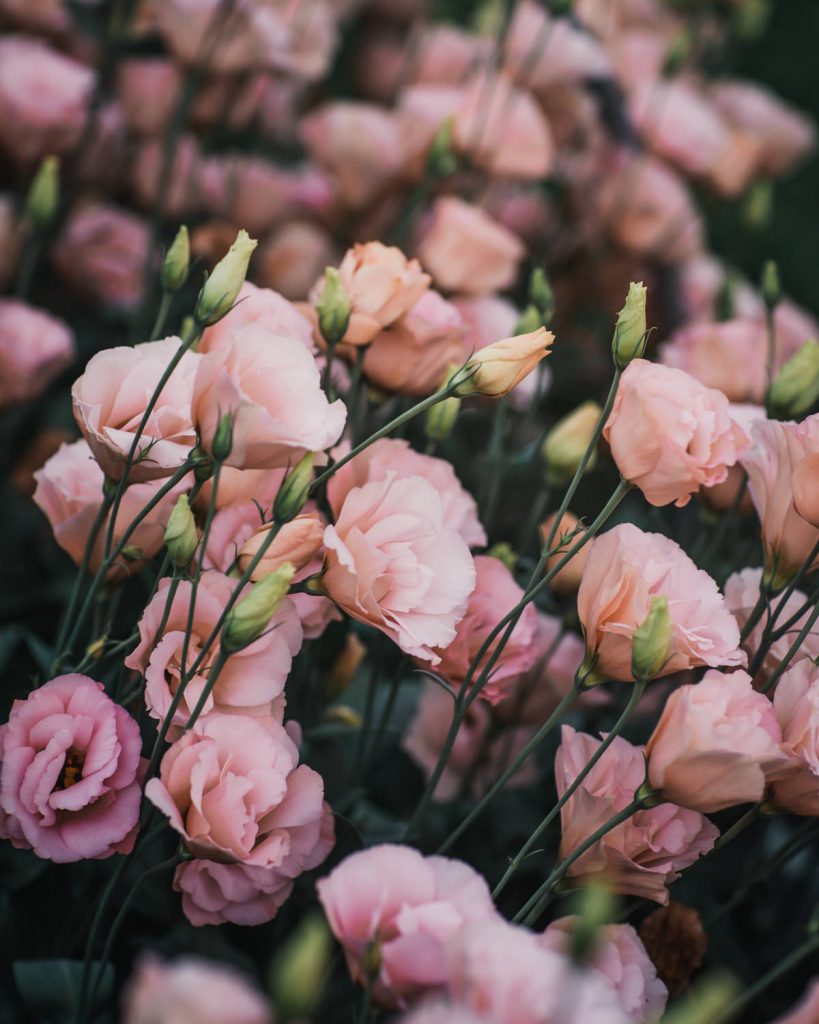
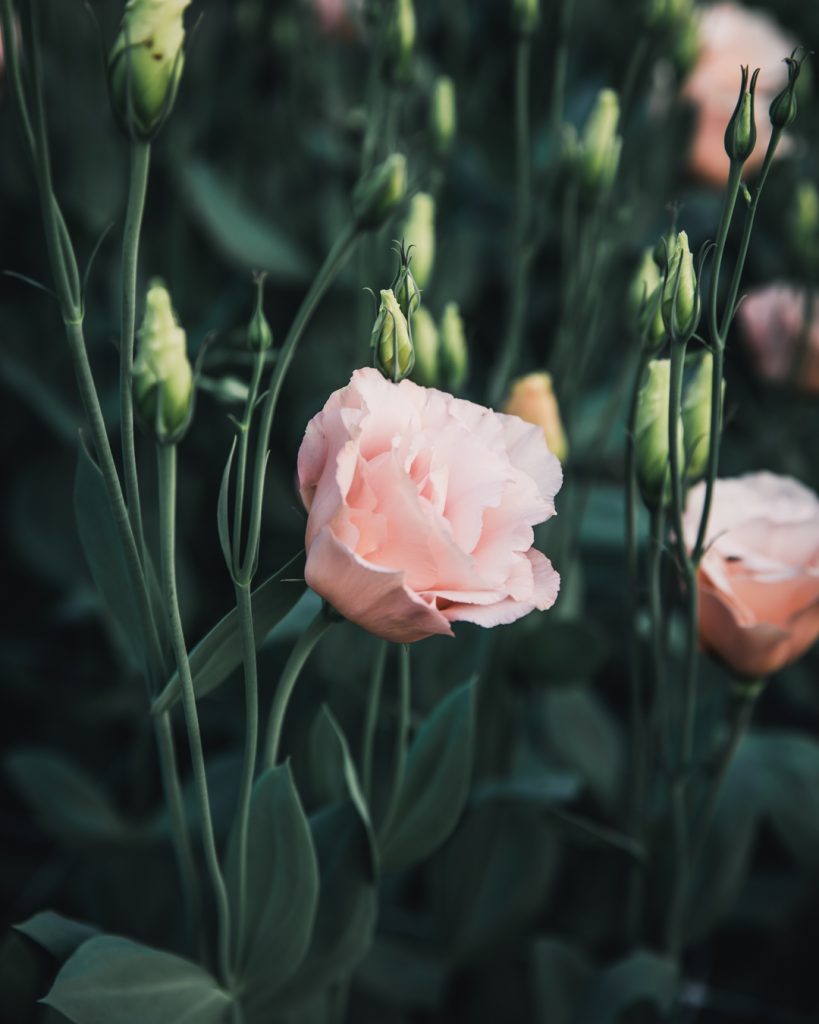
Varieties
So far, the varieties that have been the tallest for me are: Arena 3 Apricot, Celeb 2 Honey Pink, Corelli Light Pink 2. Some of my shortest stems hav been Doublini 1 White, Sabrina 1 Orange, Voyage 2 Light Apricot, and Roseanne Deep Brown 2. Though I hate to even say that because they were hardly short (at least 24″ or taller) and these are some of my most-favorite varieties (though I can hardly choose, if I am honest).
In 2020, I grew about 600 plants. In 2021, about 1,000. In 2022, 1200. And in 2023, I’m really going all in on lisianthus at a little over 2,000, as my goal for 2023 is to ramp up what’s profitable and cut back on growing every filler imaginable, ha! I also want to catalogue more varieties as a resource.
Varieties I’ve Grown
ABC White (2? I can’t find the order form), Arena 3 Apricot , Celeb 2 Honey Pink, Corelli 2 Light Pink, Echo 1 Champagne, Roseanne 2 Deep Brown, Roseanne 3 Deep Brown, Roseanne 3 Brown, Sabrina 1 Orange, Voyage 2 Light Apricot, Voyage 2 White
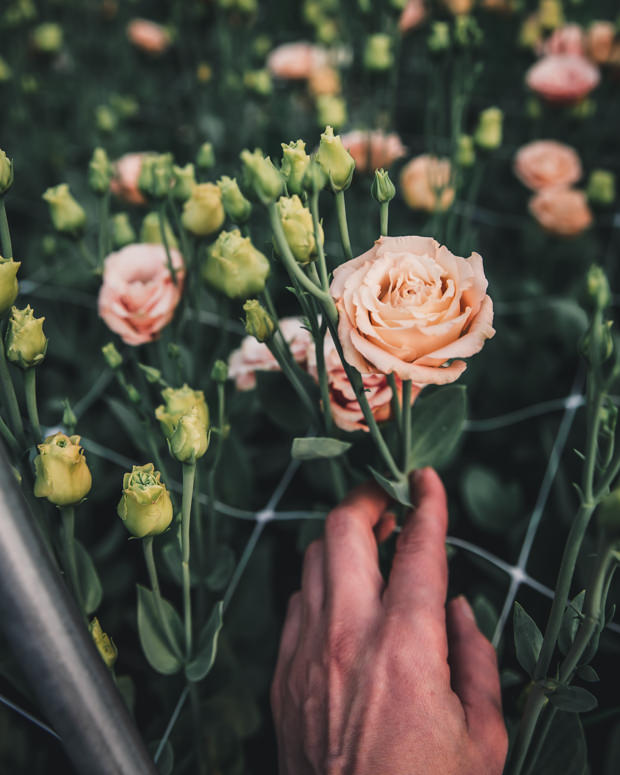
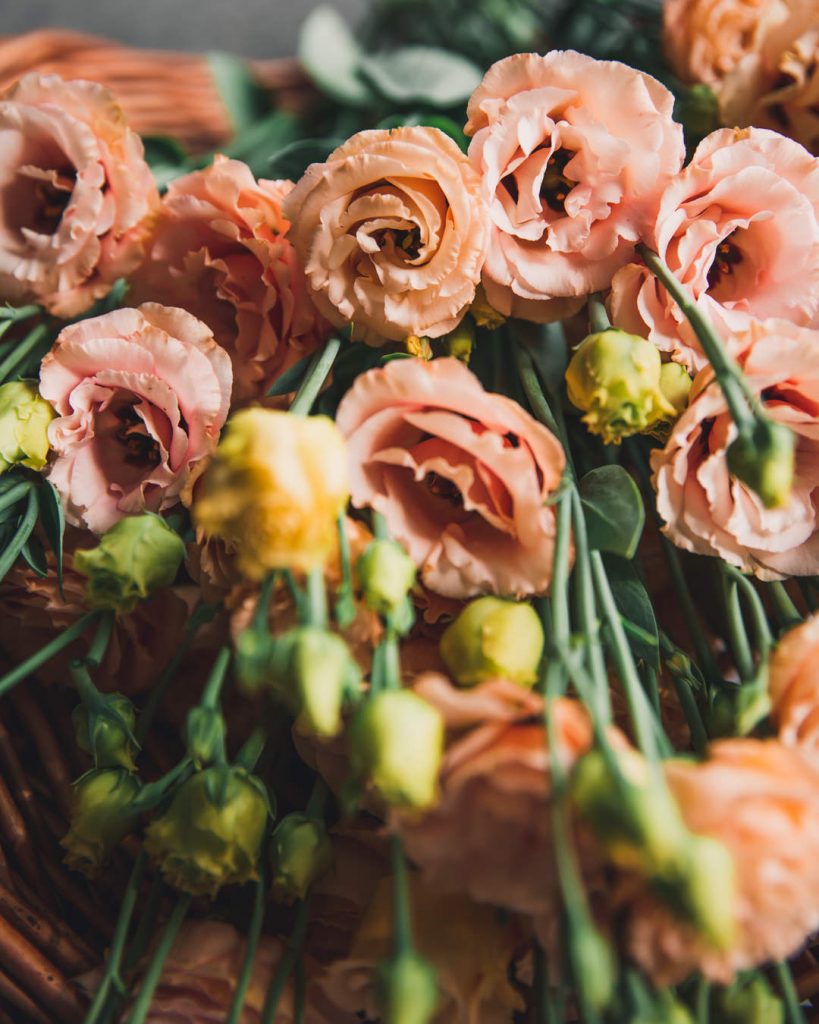
What I’ve Dropped
I dropped ABC White in 2021. I dropped it because the flower form was a little . . . rigid?? for me? The center a little too green/yellow? I dono, most growers absolutely love the ABC series, and it’s definitely a reliable white, I think I just cut it because I always want ivory, peach, blush, and champagne-colored everything. I also seem to lean toward the Sakata and Sumika varieties. However, it’s not all about me, HA! I’ve added a variety of whites back for 2023 due to an uptick in white-wedding and florist requests. Who knows, it might make it’s way back depending on how my 2023 picks go, ha!
I am dropping Doublini in 2023 (which I’d typically grow from seed). It’s cute for small-design work, but I’d rather just clip an immature lisi bloom or use other flowers for filler. But again, a lot of people love it as a spray-rose look-alike.
I’m also dropping Echo Champagne in 2023. This one was TOUGH for me. Even looking back at photos, I question my decision. It wasn’t short, I just didn’t love the color and blooms *as much* as others I have in this color palette. Actually, I should restate that: some of the stems were really great, but others had more of a stripey pattern and were a bit wimpy. In all fairness, I originally ordered it for an earlier crop in our high tunnel, but the construction was significantly delayed, so they came on with the other flouncier blooms.
Other than that, I continue to grow all of the other varieties as I absolutely love them for their color and form. They all have more-than adequate stem length for me. They are one of the tallest stems we grow on the farm, so I usually have to cut them down either way.
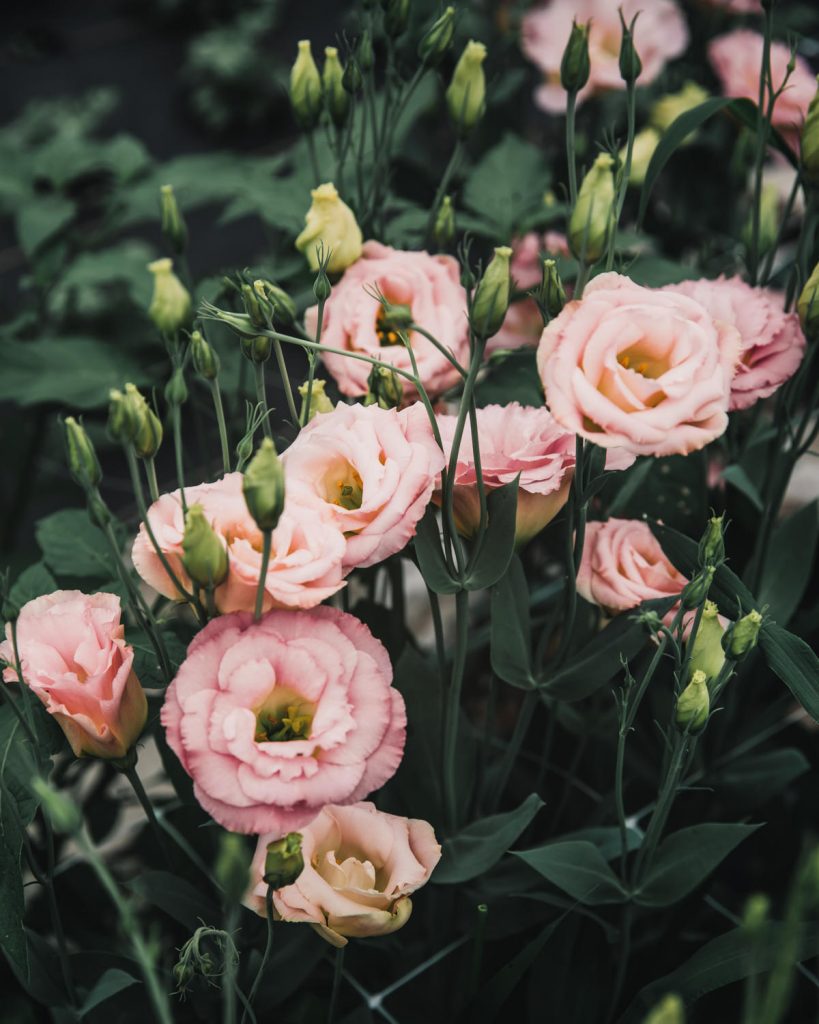
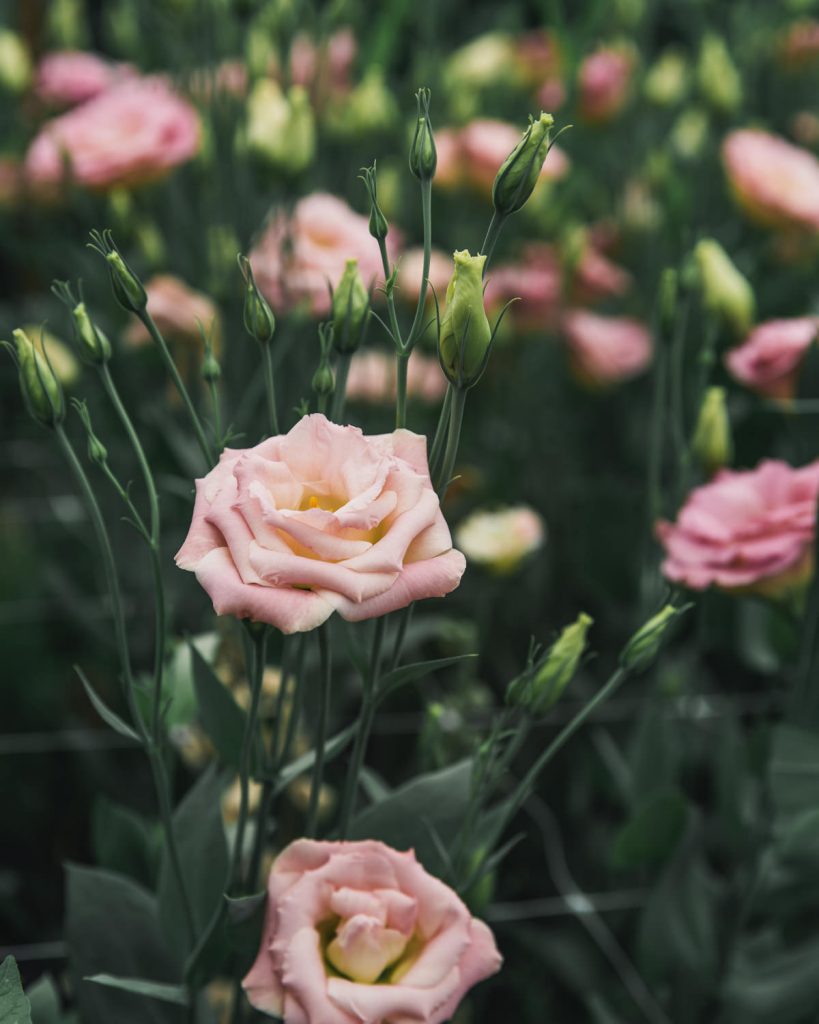
2023 New Varieties
I’m trying the following (quotes are from Farmer Bailey’s Website).
- Echo 1 Lavender
- “One of the first double Lisianthus series for cut flower growers. Group 1 for early season harvest. Bred by Sakata.”
- Not giving up on the Echo series, and an early pastel lavender sounds dreamy.
- Celeb 2 Misty Pink
- Due to how obsessed I am with Celeb Honey Pink, I had to try Misty Pink. Sounds perfect for weddings.
- Celeb 2 Neo Beige
- There was no description, and I literally don’t even know what this name means, but I am pretty sure I love it. I had to google search and not a lot comes up, but it does appear to *hopefully* be a lovely beige.
- One of my florist pals is always looking for brown, tan, and beige flowers, so I thought this was worth a grow for both of us. If anything, it seems like it would be a great bridge and wedding color.
- Celeb 2 Yellow
- I know, I have a problem. And it’s not even my ONLY yellow variety for 2023! I know some people aren’t into yellow, but I think it’s beautiful (my mom loves yellow roses).
- I’m super inspired by Gabriella Salazar’s work, and I love her use of yellows/peaches/oranges with whites, and even reds (a flower color I’m not usually as drawn to). She followed me on Instagram, and I actually shrieked out loud (I think I even threw my phone). And then insisted Matt come look, lol, like he knows. So yeah, I’m basically a huge fan. I took her design course in 2022 and highly recommend it!
- Chateau Blue
- “I first saw this variety in Holland in 2018. I figured out that it came from a breeder in Japan, called Sumika, and that is when I first approached them about supplying the US . . . Blue Chateau is the only color in the series. It is indeed a lavender beige color as the photo indicates, unlike anything I’ve seen.”
- Here, just take my money.
- Croma 3 Silky White
- Farmer Bailey says that you might be tricked into thinking these are ranunculus, so I’ve always wanted to try them, but they were always sold out when I placed my order. I was actually hoping for Pure White, because I tend to lean toward the ivories and plan on growing Voyage White, but only Silky White was in stock (no pictures, we’ll see).
- Croma 3 Yellow
- Same as above, picture on Farmer Bailey’s website is stunning.
- Roseanne 1 Light Brown
- “High end floral designers can’t get enough of them. The less savvy farmers’ market customer may think they are dead. This is my favorite series, in all the colors. Bred by Sakata.”
- Me being me, the whole “dead” description intrigued me! In fact, my first year growing lisianthus, I ordered ‘Roseanne Light Brown’ despite having no idea who my market or customer was or even IF I could grow lisianthus (just to give you an idea of how *I* choose flowers, ha). Anyway, they sent me “Deep Brown” instead, and I just tend to role with these types of accidents. Good thing, because our customers absolutely adored Deep Brown (now listed as “Brown”) and we’ve grown her ever since (I love it too, especially for any arrangement that needs a little, moody pop).
- Voyage 2 Champagne
- “Big, ruffly, and fully double. If I had to pick one series to grow, this is it.”
- I love Voyage Light Apricot, I love champagne, no brainer.
- Wedding 2 Kiss
- “A top-selling white in Japanese markets. In appearance, it is between a rose-type and a fringe-type. Heat resistant.”
- Another Sumika variety, similar to Celeb. No explanation needed.
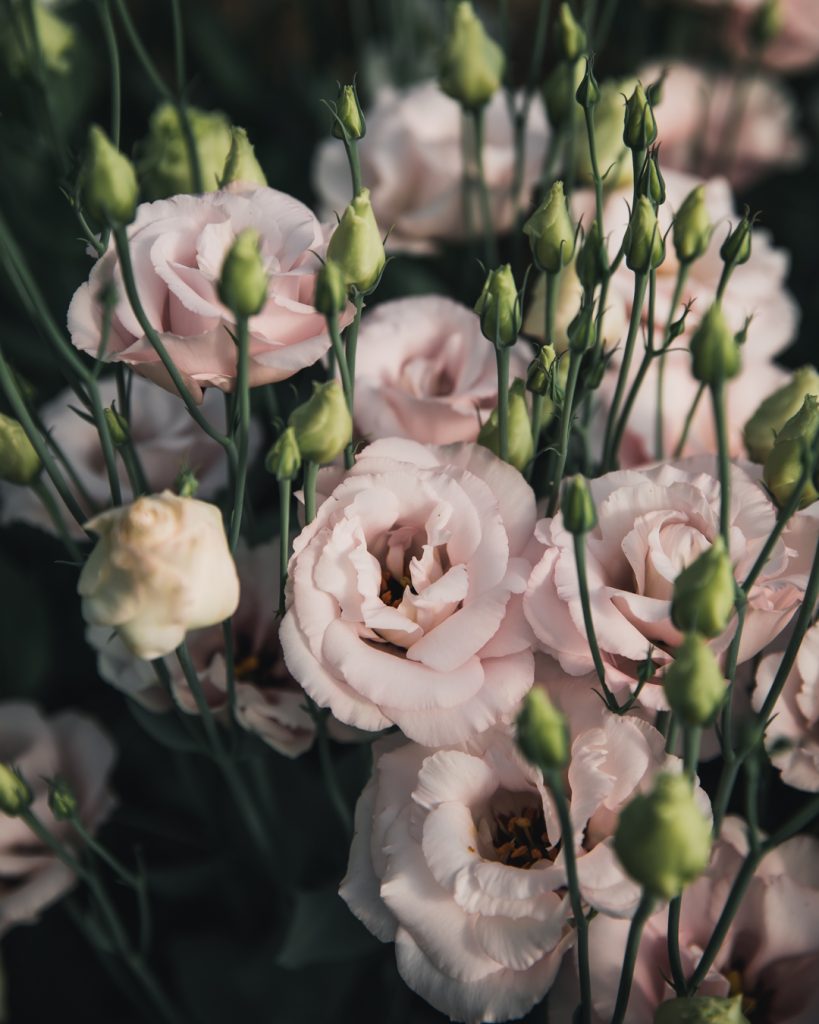
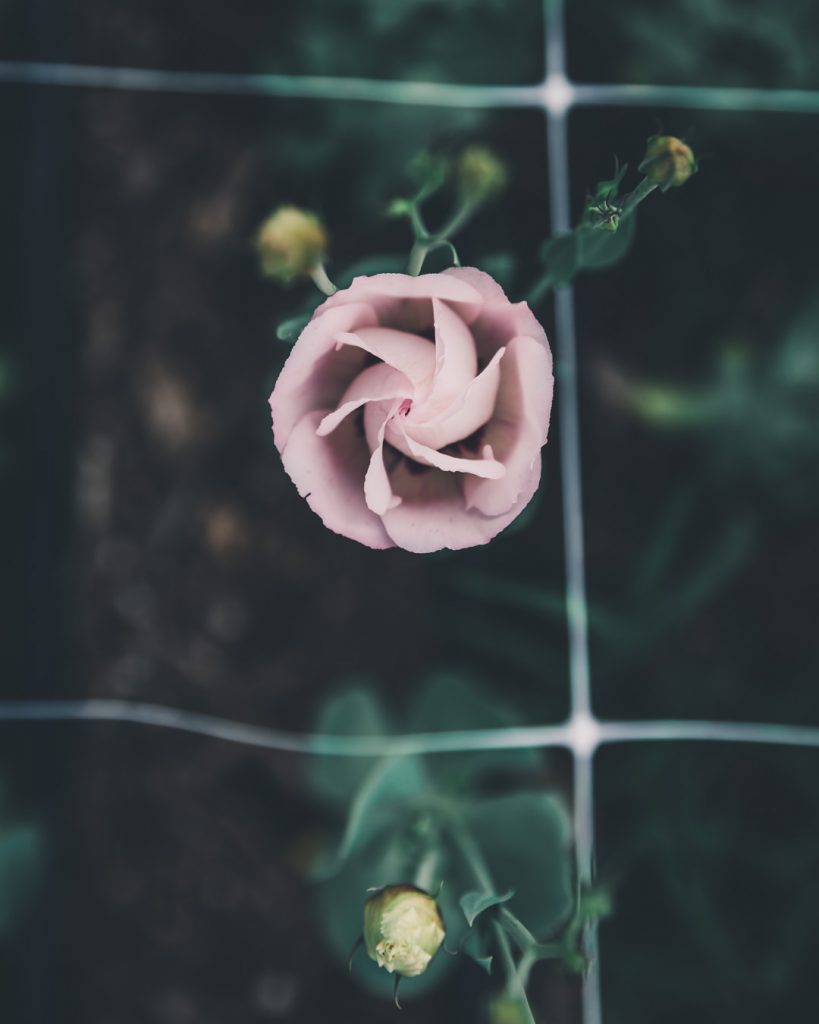
Pricing: N&B
February 21, 2023, USDA Boston Terminal prices for sunflowers are currently:
LISIANTHUS (EUSTOMA): MARKET STEADY. bunched 10s CD long 20.00-22.50 mostly 22.00 EC long 18.50-22.50 mostly 18.50 IS long 22.00-25.00 NL exlong 30.00-32.00 mostly 30.00 long 22.00-24.00 mostly 24.00
According to Farmer Bailey, “Japanese cut Lisianthus sells at high-end wholesalers for $5-7 per stem; if you can achieve this quality, you should be able to get an enviable price.”
Pricing: BTS
During the 2022 season, we offered lisianthus by the dozen for local pickup at 5 different business locations in our area ($30) or for delivery on Fridays, limited to certain ZIP codes on our route ($40). These are all growers choice, meaning we choose the colors/stems. I just do a dozen because our retail customers get a variety of stem quality (meaning, some are primo with multiple blooms, while some might only have two blooms). While we also use lisianthus in market bouquets, lisi by the dozen are super popular with our customers. I feel this is a good price for grower’s choice in our market, so I don’t see this changing for us in 2023. In 2022, our price / stem to florists was $2. Because florists are choosing colors and generally given higher-quality stems, this will increase in 2023 ($2.50-$3). We get a lot of requests to ship our flowers, so it’s something we are considering (or at the very least researching). Sunny Meadows Flower Farm currently ships 2 bunches (20 stems) at $60 with $20 overnight Fedex shipping. This seems in alignment with current pricing.
Design: BTS Only
Believe it or not, I actually use the less-premium stems for design work, HA! Why? Because I snip out the blooms/stems anyway. To be clear, the blooms are still premium, I just don’t need a premium stem (i.e., a crazy stem with 7 blooms). In other words, I would not use one stem with 7 blooms placed in one spot in a vase. Even if it is a perfect stem, I’d separate those 7 blooms and place them throughout the design. So, why waste a premium stem that could go to a customer or florist?
While you’ll often hear design in 3s, I actually like pairs. Pairs happen in nature all of the time, so I think this is also pleasing to the eye.
I also think that the wonkier the stems, the better! When my lisianthus toppled over at the end of the season in 2022, these were not great for retail bunches, but they were perfect for design because their stems had all the bends and curves!
As far as color, there are SO many great varieties, so pick what you’re drawn to. All of the varieties I listed in the variety section are great for design work IMO. They only thing that doesn’t work for me in *some* designs, depending on the color palette, is the immature blooms can be chartreuse green. If that isn’t working with my palette, I’ll snip them out.
Wrap Up
OK, my friend, that is IT for January’s Plant Profile. What do you think? Did you find some useful nuggets? Is there anything that’s unclear or you wish I would have covered? Or is your head spinning? No worries, this link be live until the end of February, at which point you’ll get a PDF copy, so you can always refer back it. Tip: use the find shortcut (Ctrl+F on a PC or Command+F on a Mac to search for any word or term).
Have any questions or something you want to share with me or others? I know I say this ad nauseam, but I truly believe in the power of the collective and that we all have something unique and powerful to share, so please leave a question or share a comment below. We’re all better for it, and I thank you in advance!
Cheers pal!
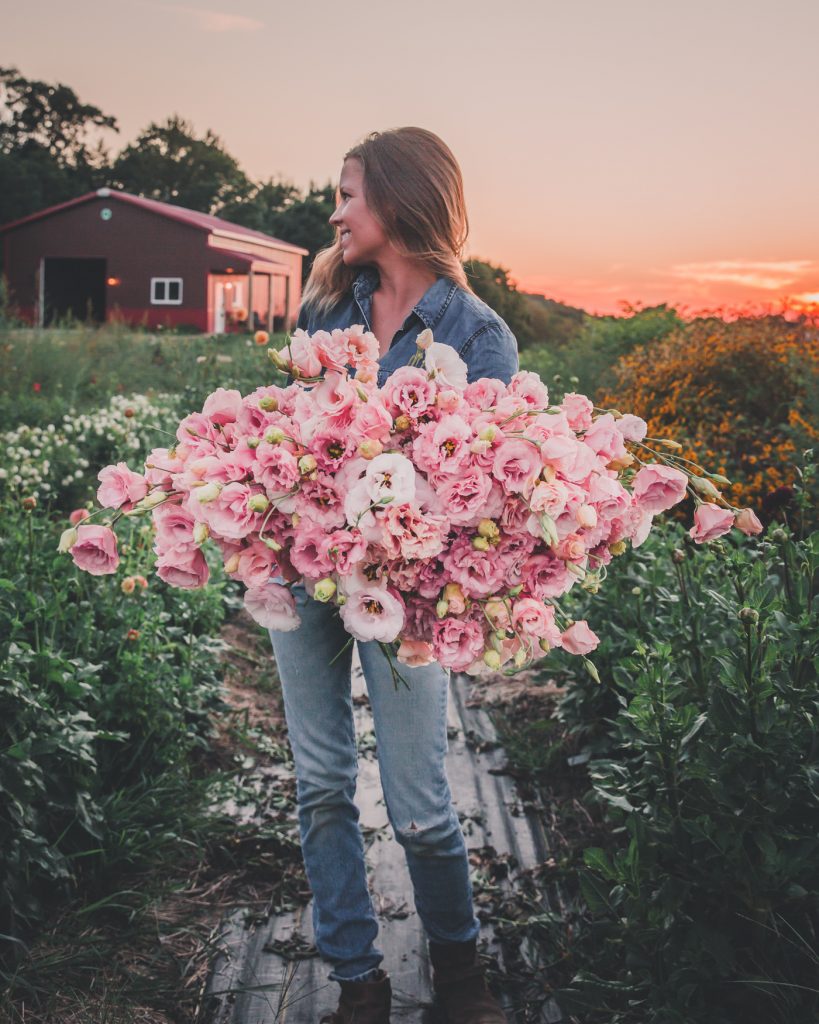
Thanks for all the great info Maggie! I planted only 6 Voyage 2 White Lisianthus last year in my little cutting garden and I fell in love with them! They were so hardy and bloomed twice! And I couldn’t believe how long they last in the vase. This year I found a local lady to order some plugs from and I have 64 plugs coming this spring! I happily eliminated other less productive flowers from my cutting garden to accommodate these beauties! 🙂 I’m most excited for the Voyage 2 Green and Voyage 2 Light Apricot! Your photos are just gorgeous and so inspiring. What would you say Lisinanthus work best/look best with when designing or do you have any tips when designing with them or making an arrangement with them? Thanks so much Maggie!
Amber, I’m glad you’ve fallen in love with them too! We are giving them more space as well, they totally deserve it. I hope to see pictures of yours! I haven’t grown green, but I’ve heard really good things. I love Light Apricot and it was a past ASCFG Flower of the Year (it goes with . . . everything?!) For design work, I actually use the less-premium stems! Hopefully this will make sense in a minute . . . You know how one stem comes with multiple blooms? I’m usually splitting up that stem, so I can focus on placing each individual bloom in particular spots in the design (the wonkier and weirder the stems, the better). It’s not unusual for me to split one up, but still place them next to each other (common wisdom says design in 3s, but I don’t mind 2s, as pairs happen in nature all the time). If the blooms naturally lay well, I won’t do this, but they usually need a little more room to breathe. I also find on some varieties, the buds can be really lime green (and this may not work with the color palette, so out they go if they’re super distracting). The advantage of this is that some weaker or weirder stems are actually perfect for design, so I can save my primo stems for selling by the bunch or to florists! Hope that helps 🙂
Thank you so much Maggie! I never would have thought to just separate them to help give them some space. That helps a bunch! 🙂 I’m so excited for them! Thanks again!
Wow, this guide was incredible! Thank you so much for all the time and effort you have clearly put into this. I’m just starting out in my cut flower garden journey, expanding this year from just throwing some zinnia and cosmos seeds in my veggie garden. We’ll see where this dream takes me! Lisananthus intimidate me, but this guide truly helped. They are just so gorgeous, that I am determined to give them a try. While it probably won’t be in 2023, I will be growing them some day!
Kaylee, thank you SO so much and congrats on starting your cut flower garden journey!! I started gardening strictly as a vegetable gardener too. Be careful, those flowers can get addicting, HA! I think growing them together is pure magic. Fellow dream-chaser here . . . looking forward to seeing where it takes both of us 🙂 Lisianthus, you can do it!! They are so rewarding and our community just loves em. If not this year, consider ordering plugs in Oct–Dec for 2024 or starting seeds in Dec/Jan (Johnny’s has a good selection). Cheers!!